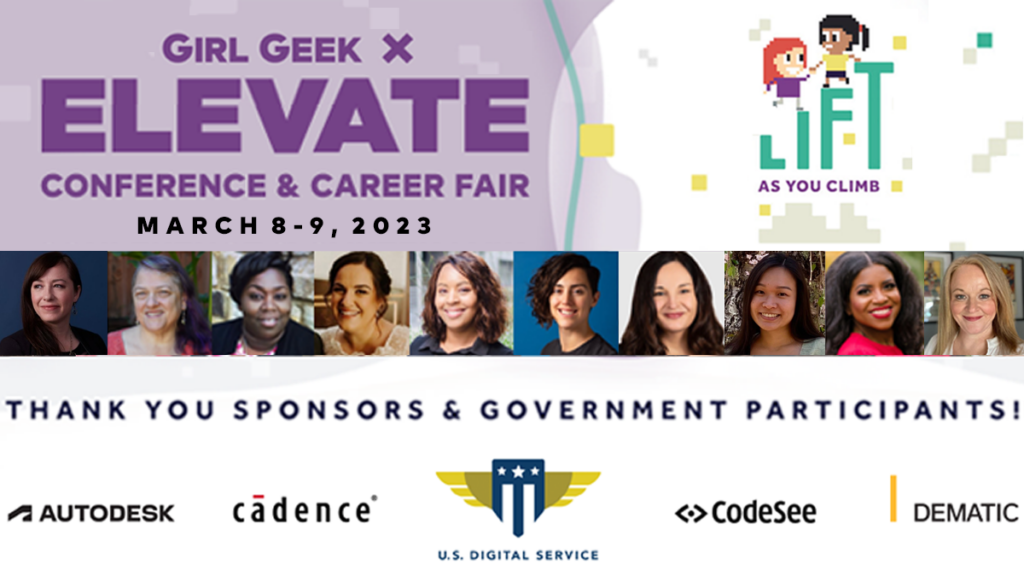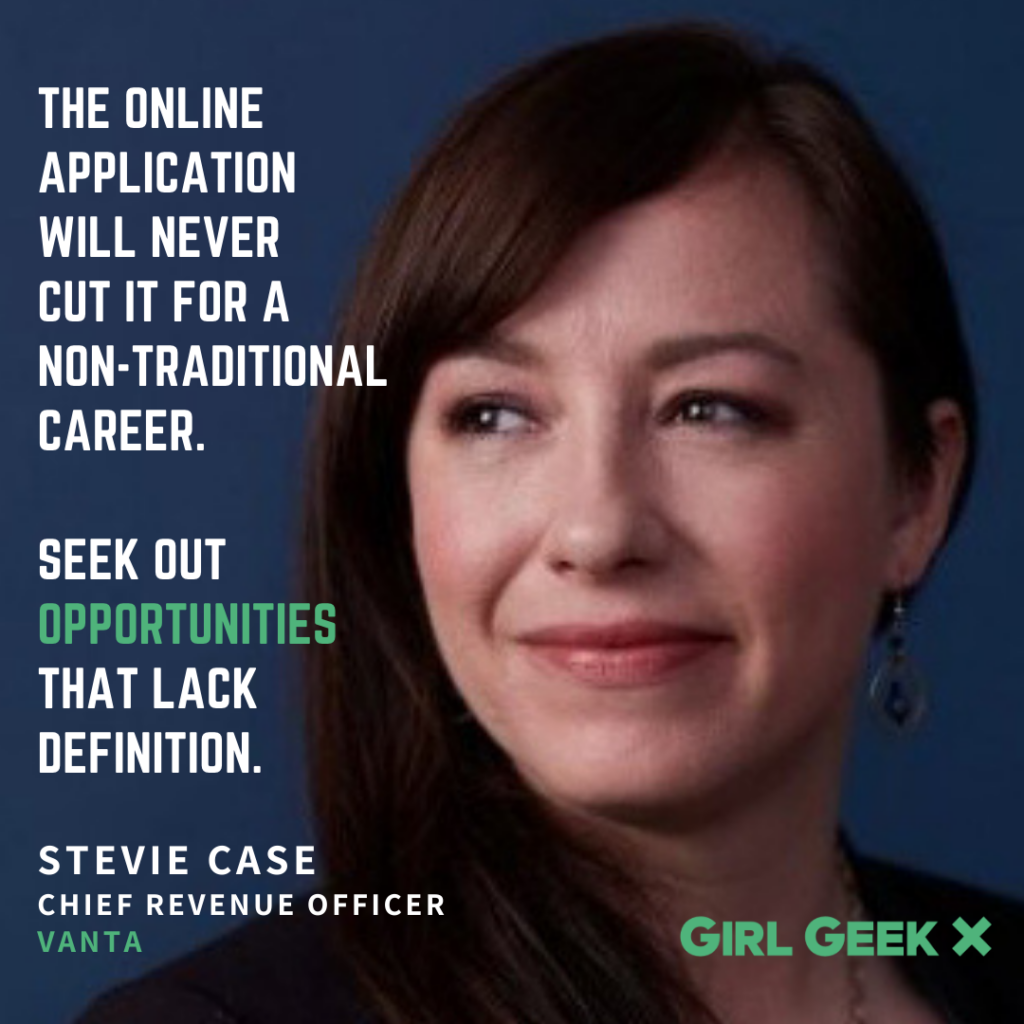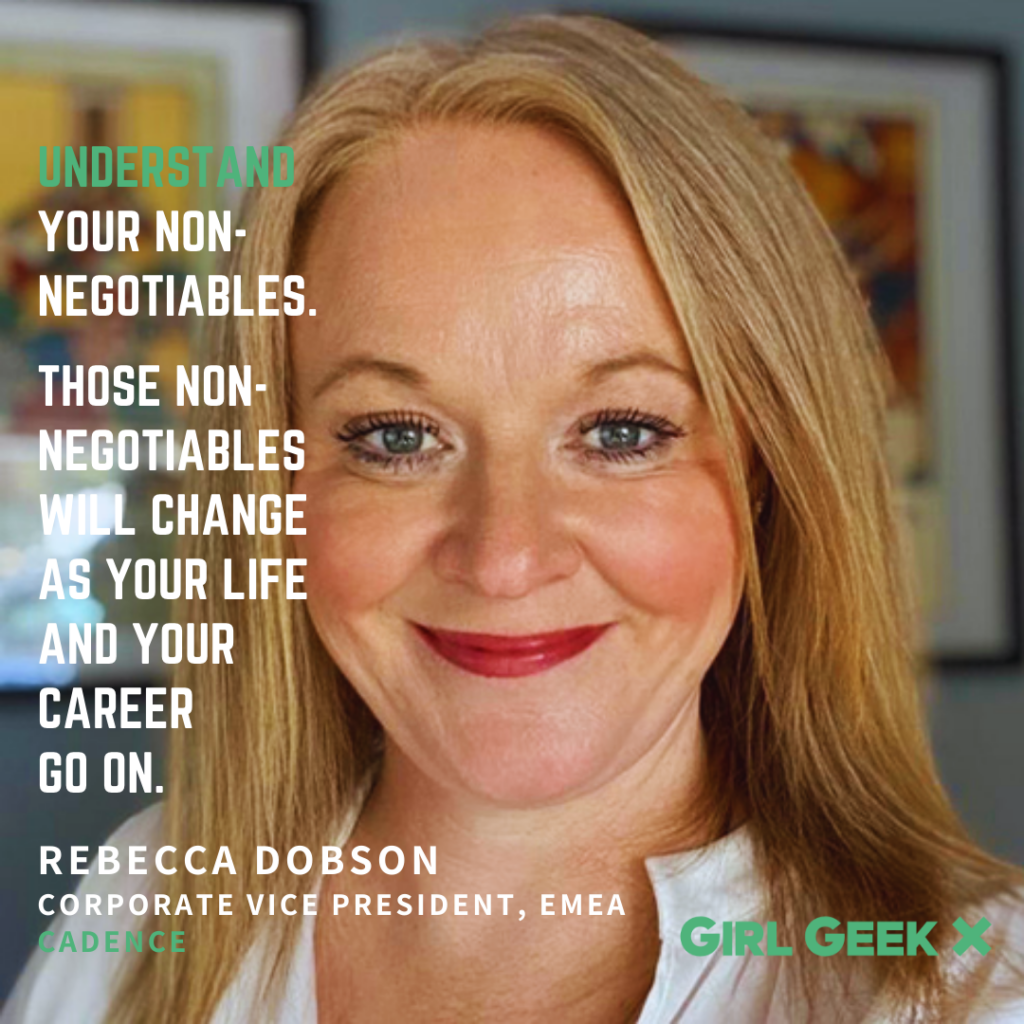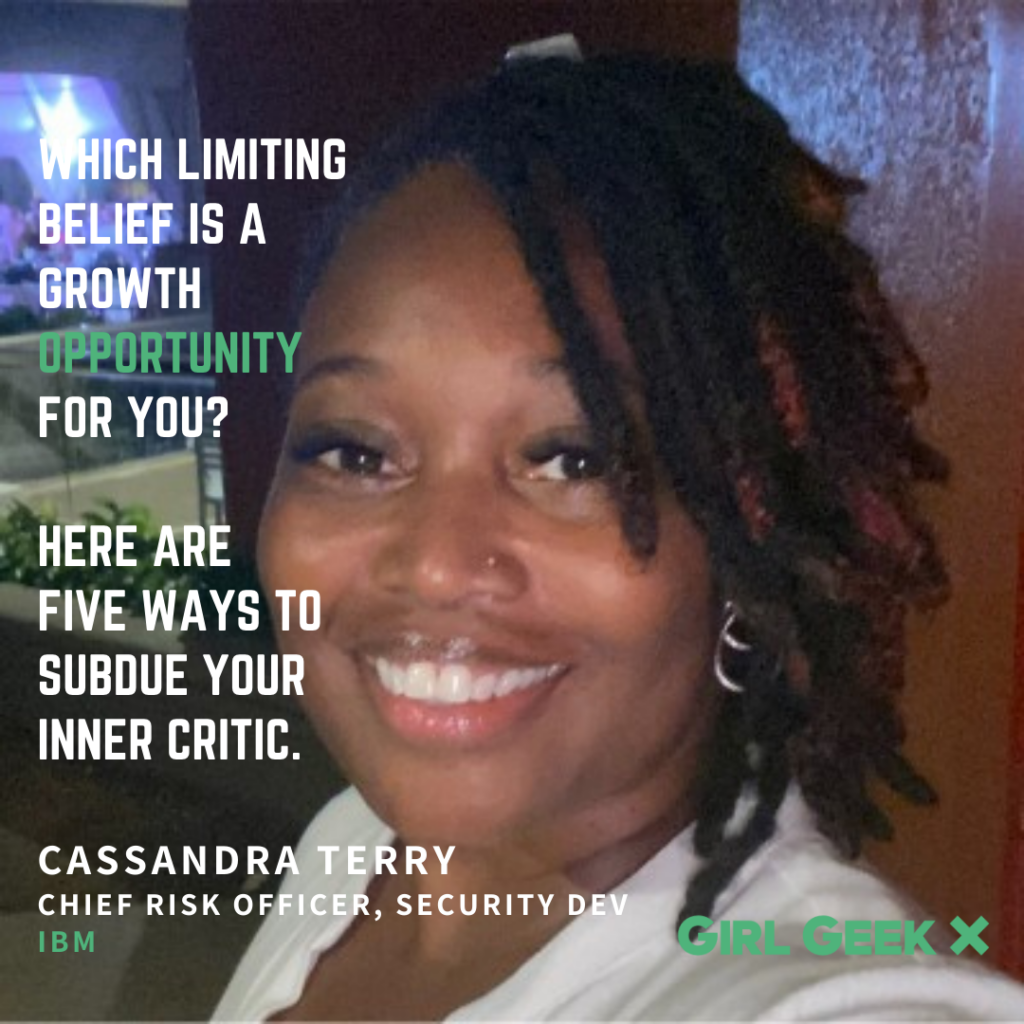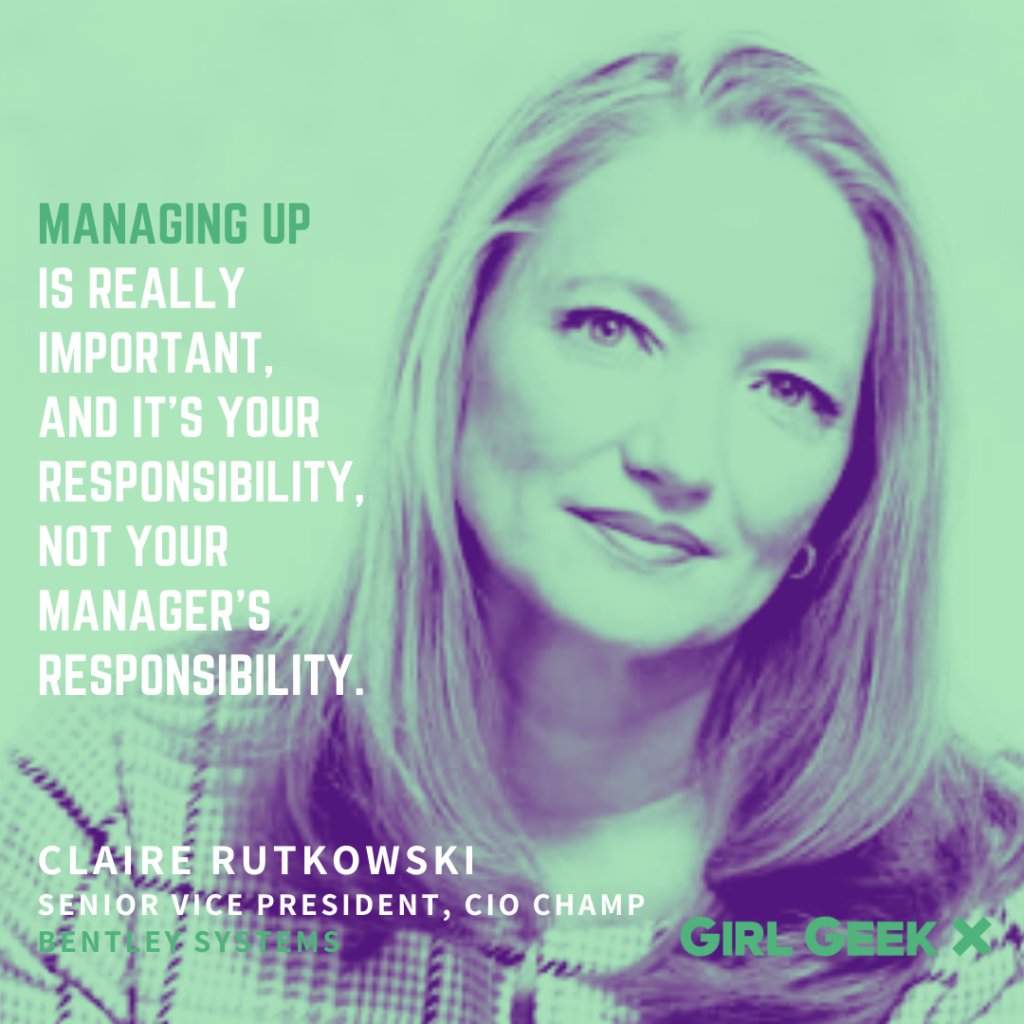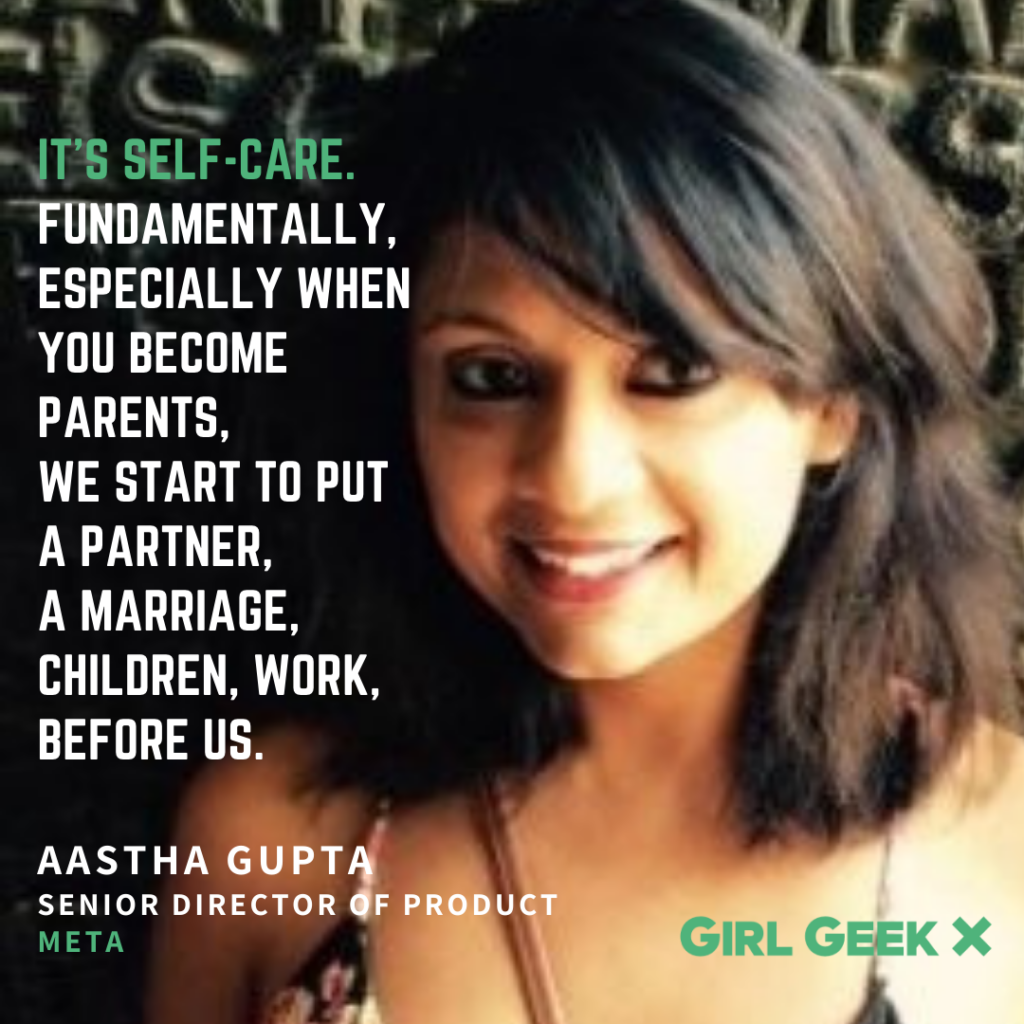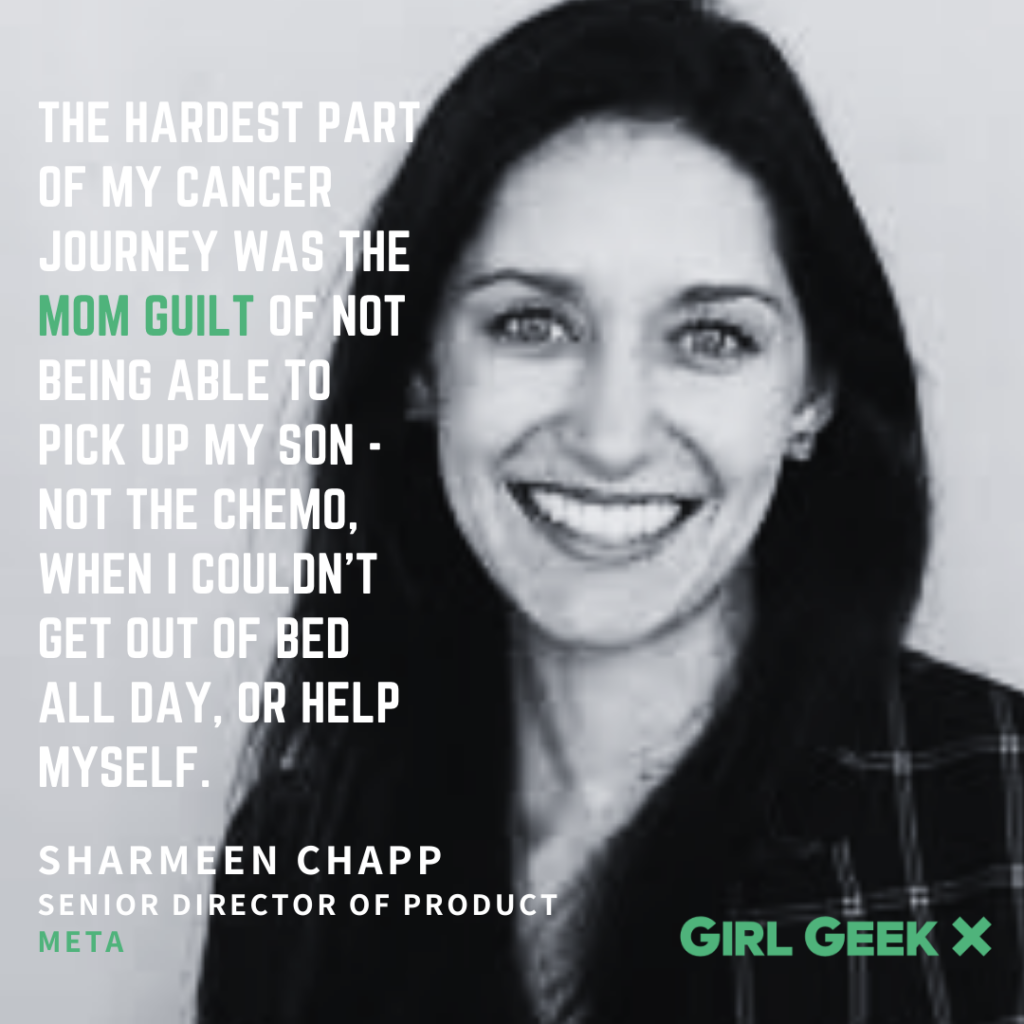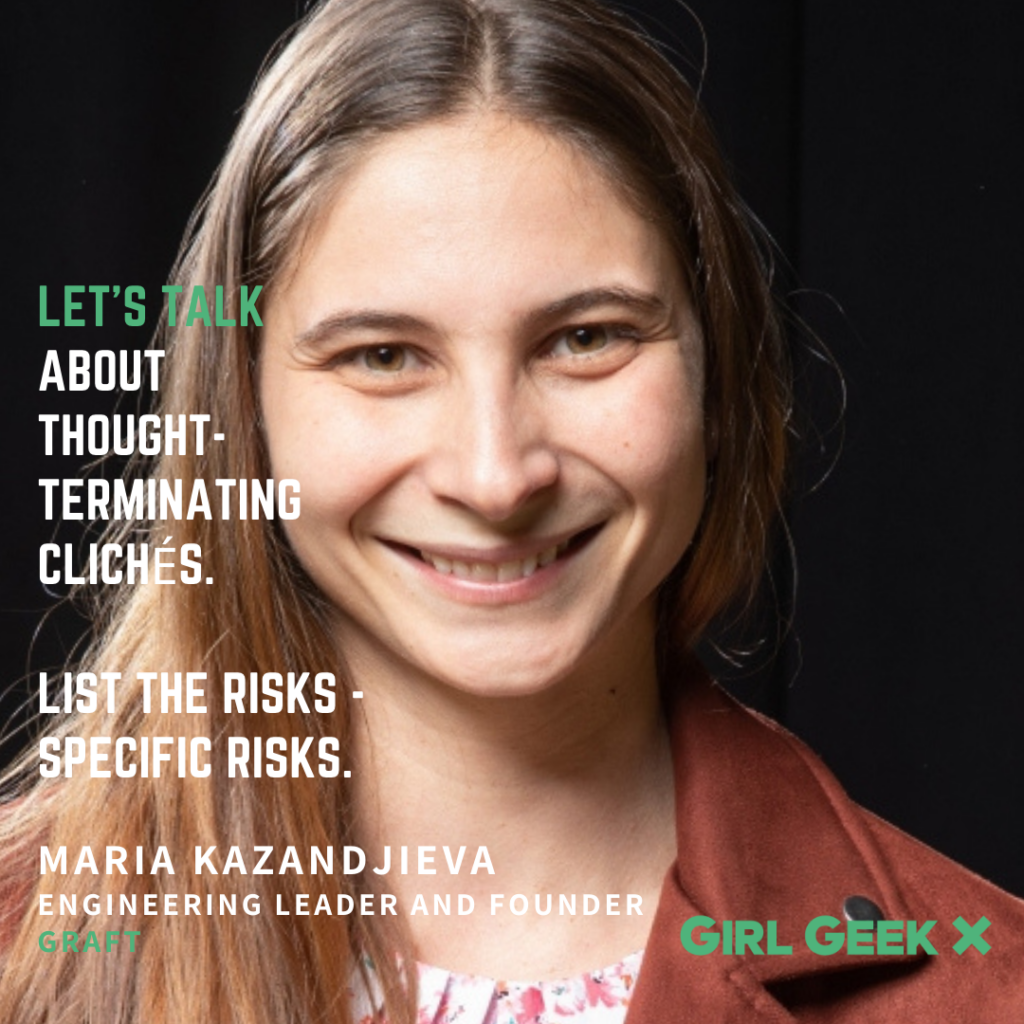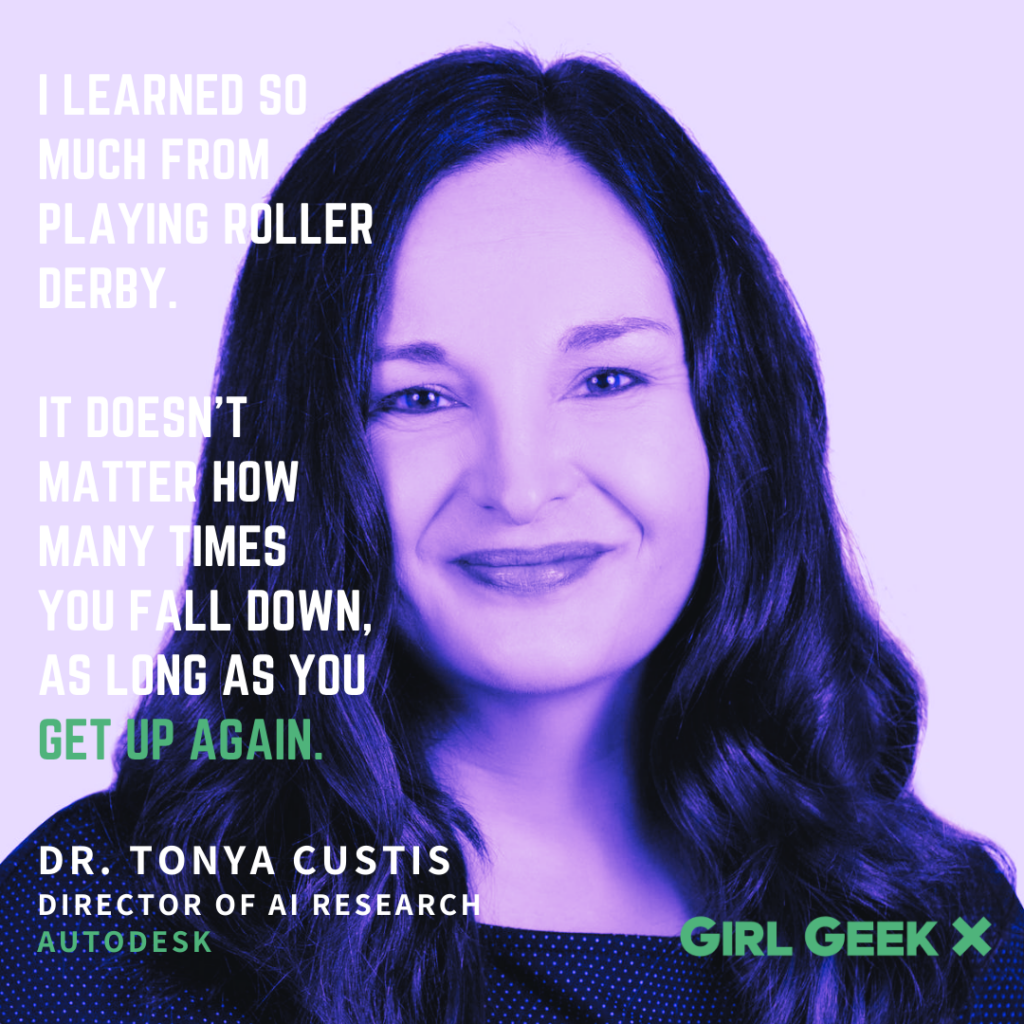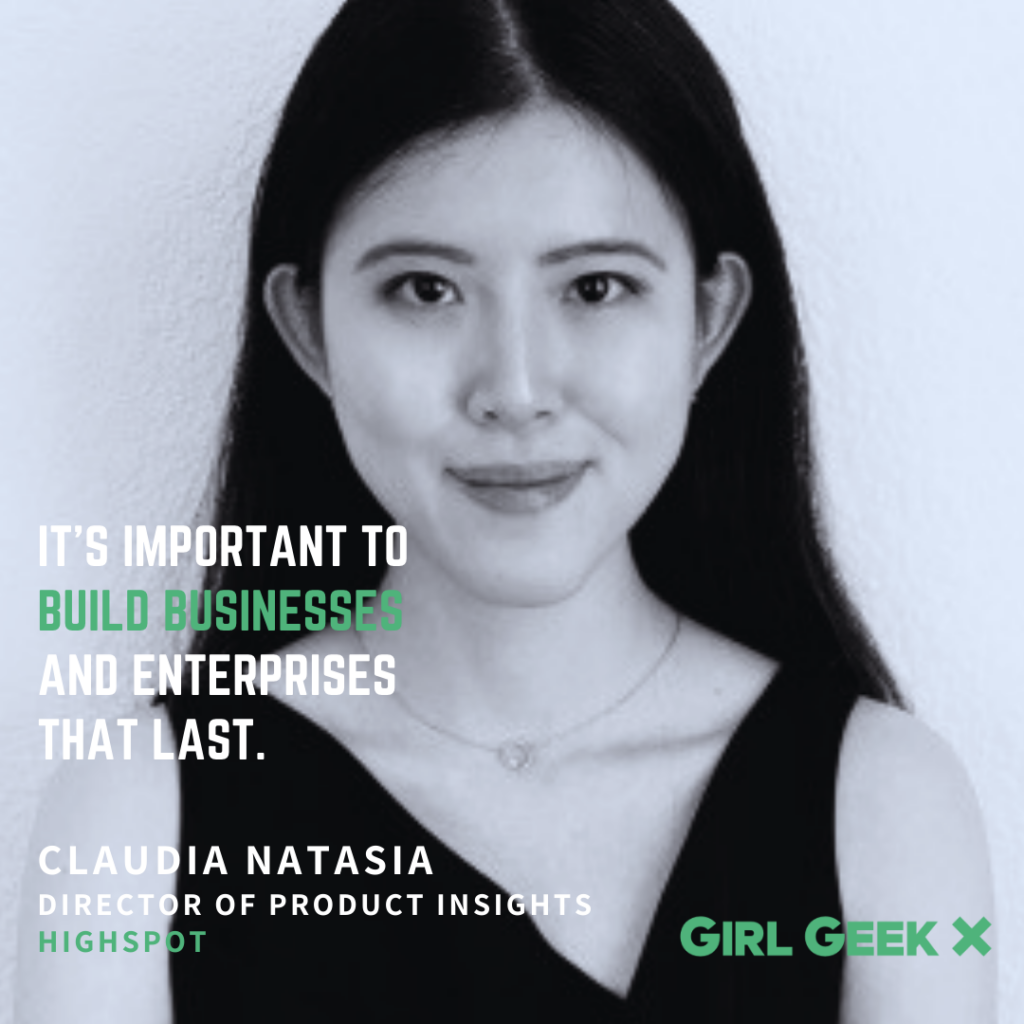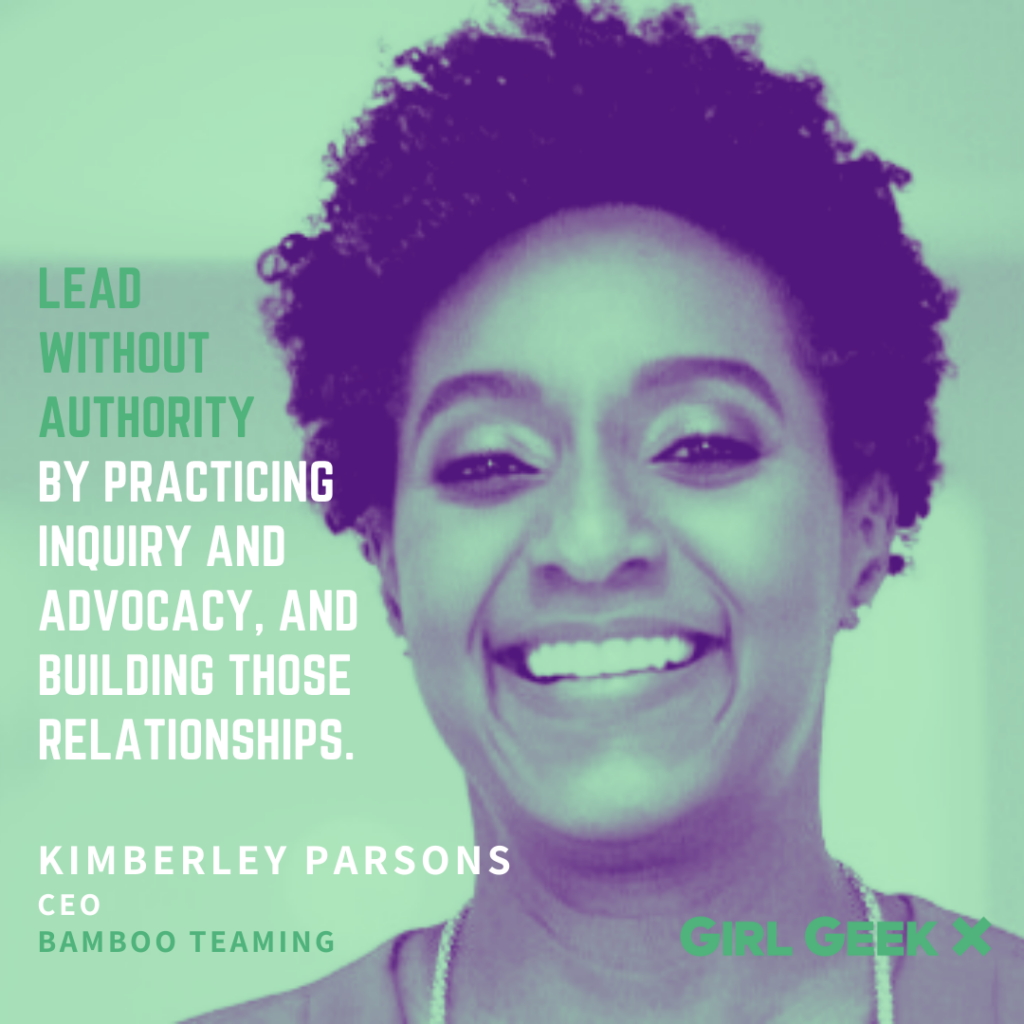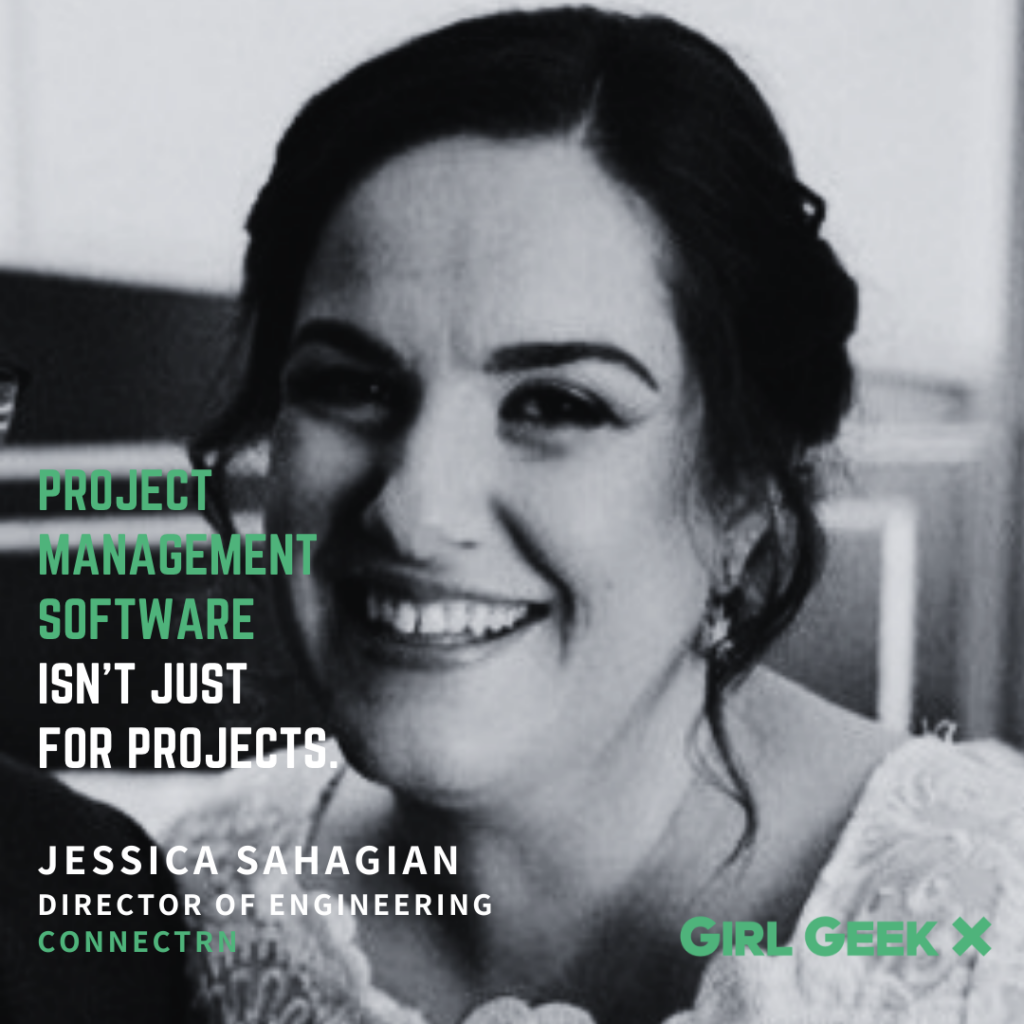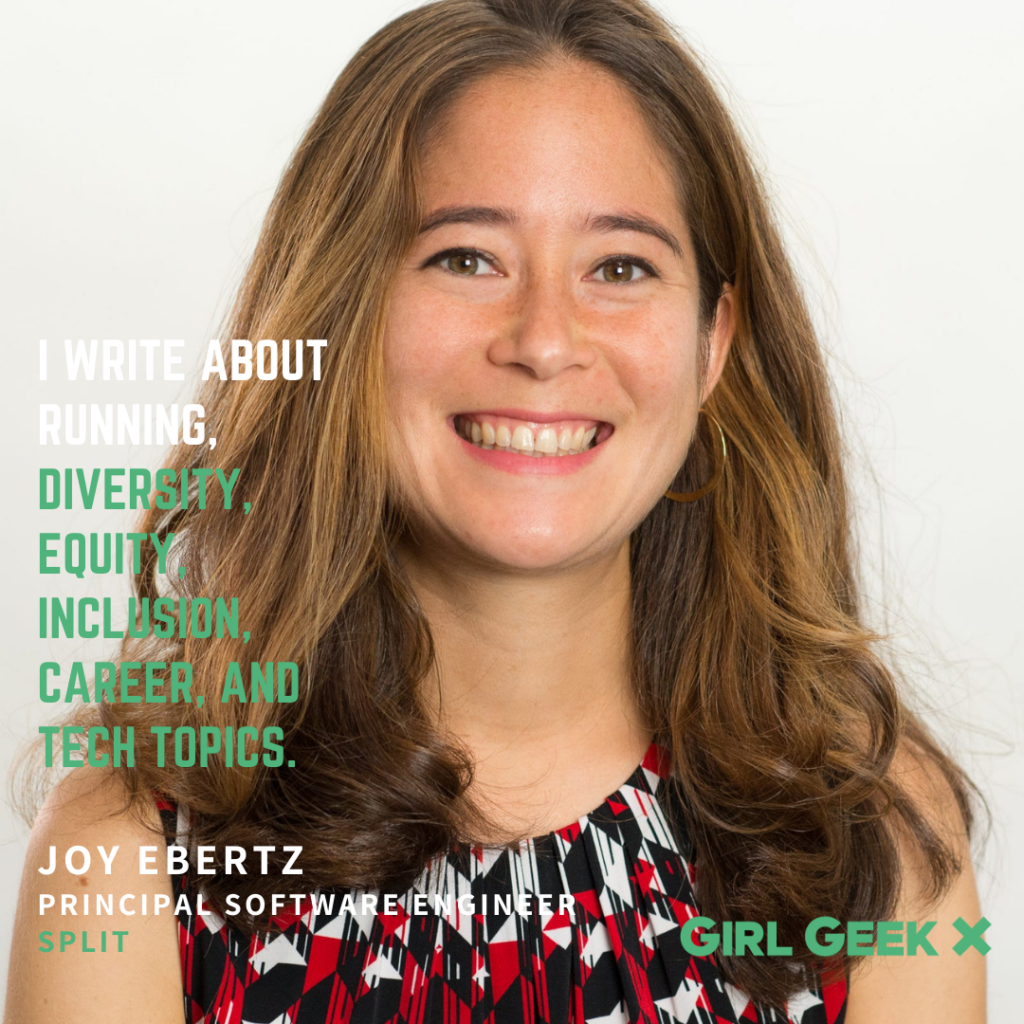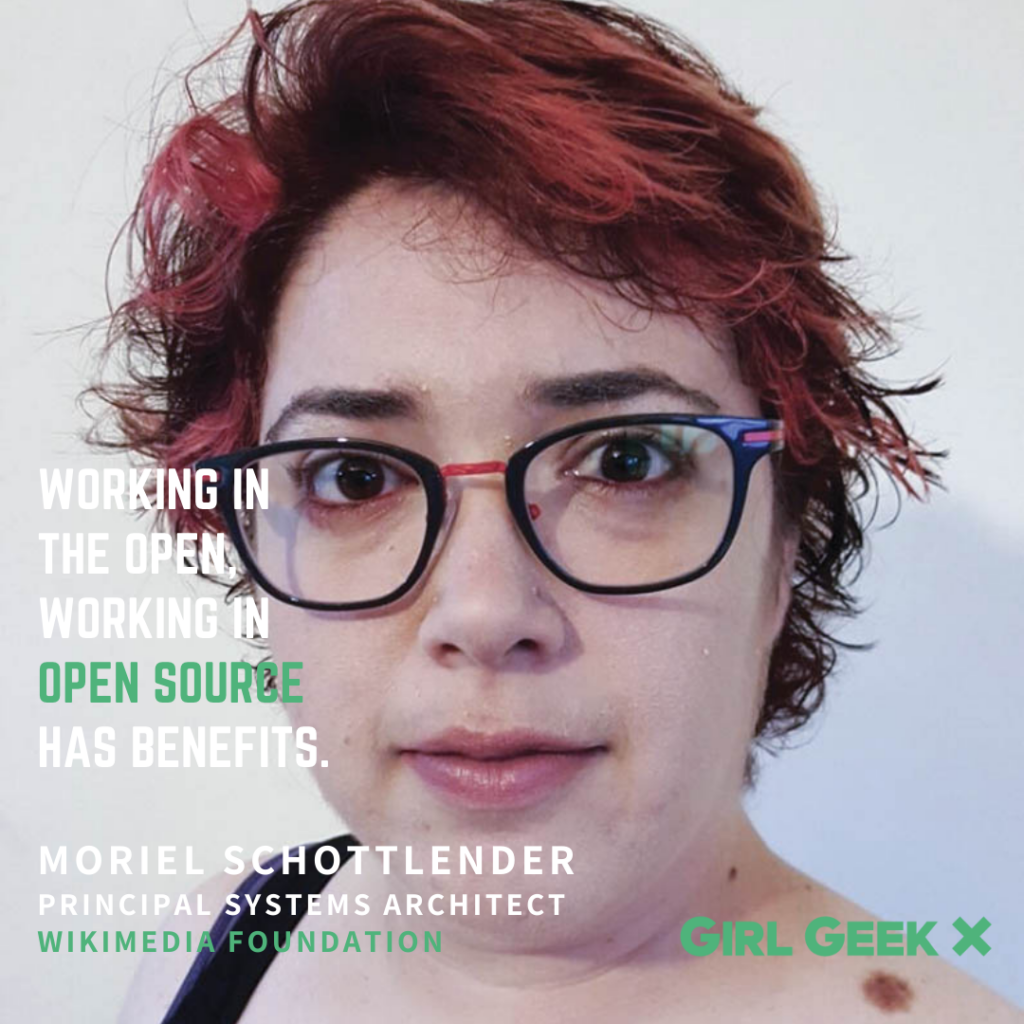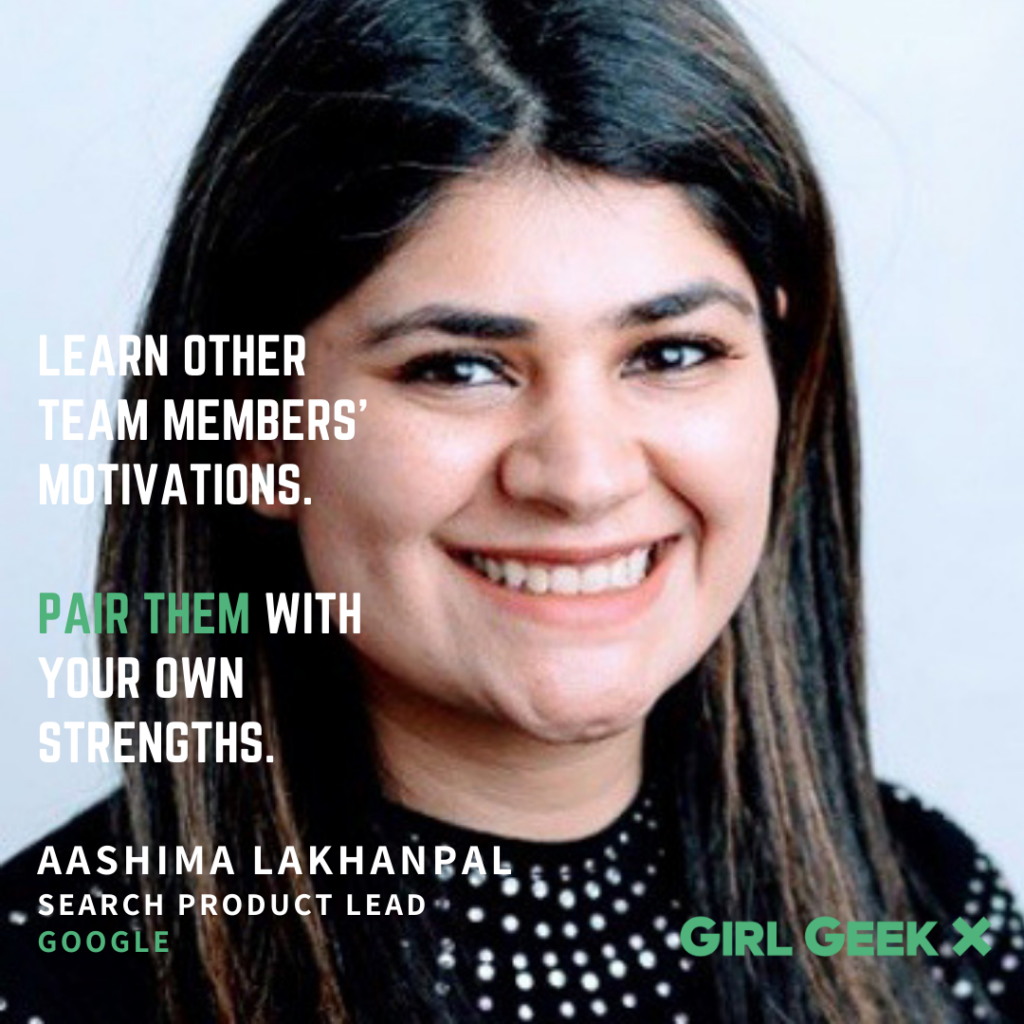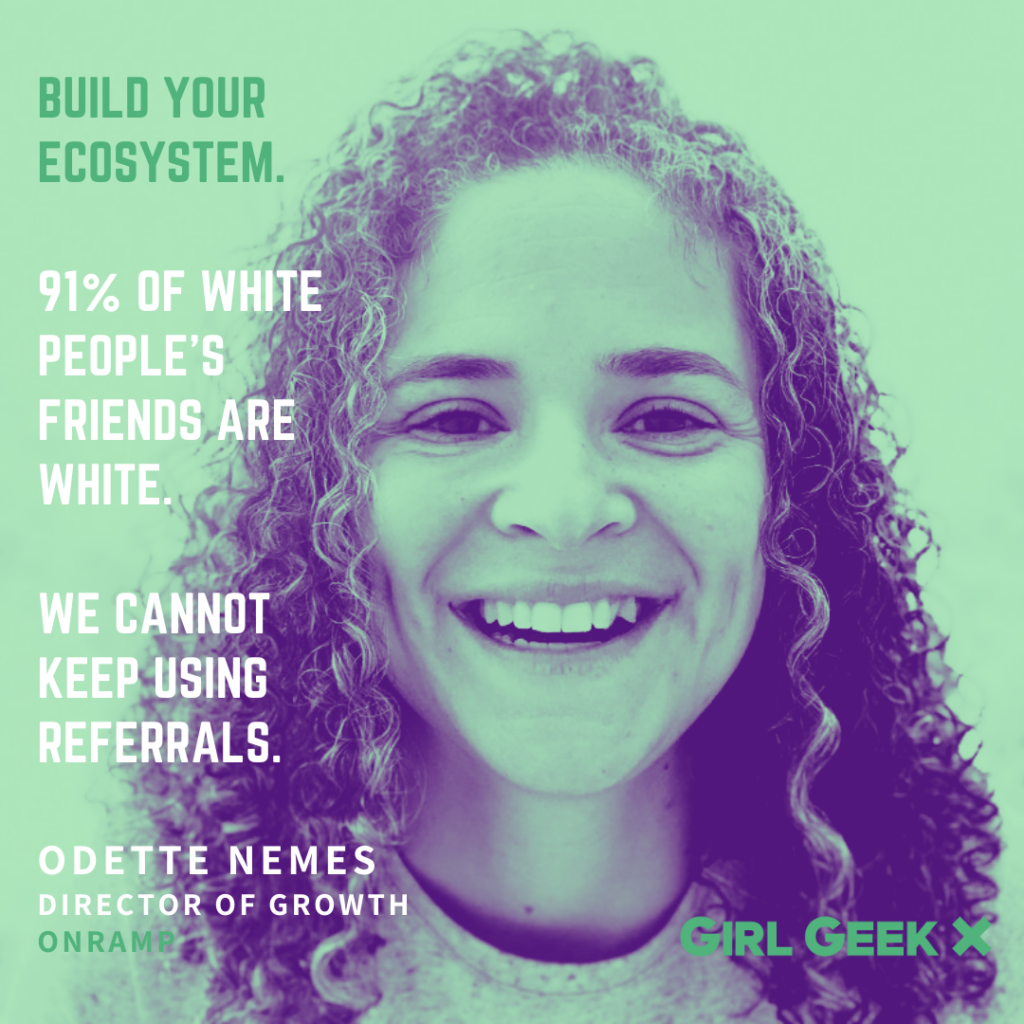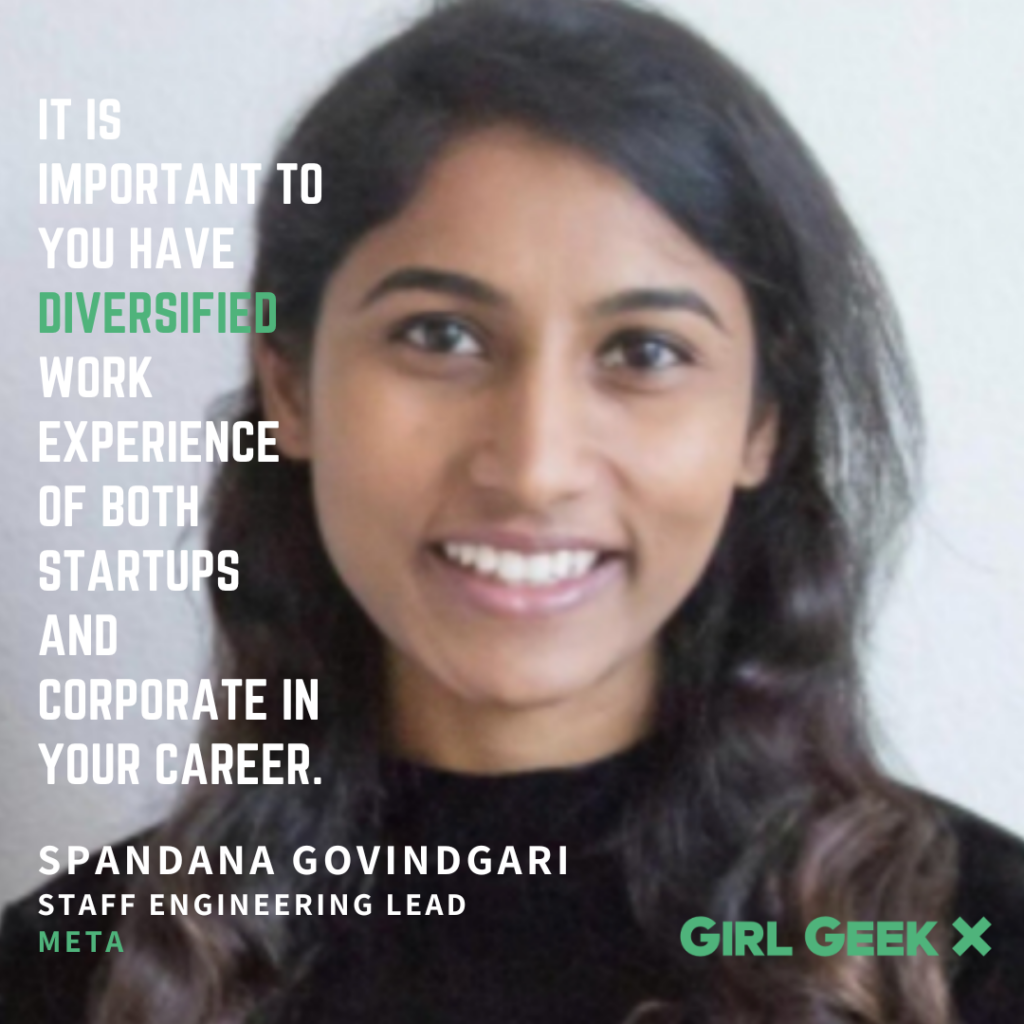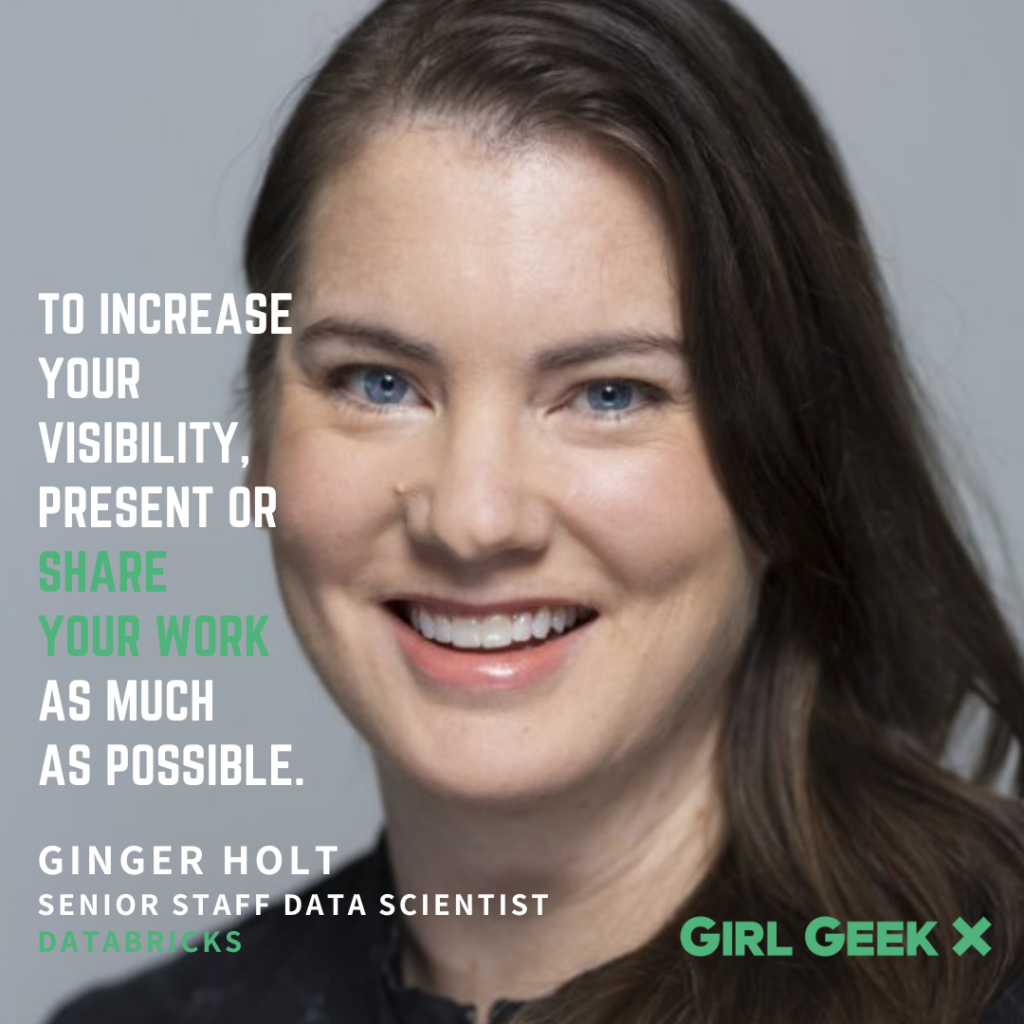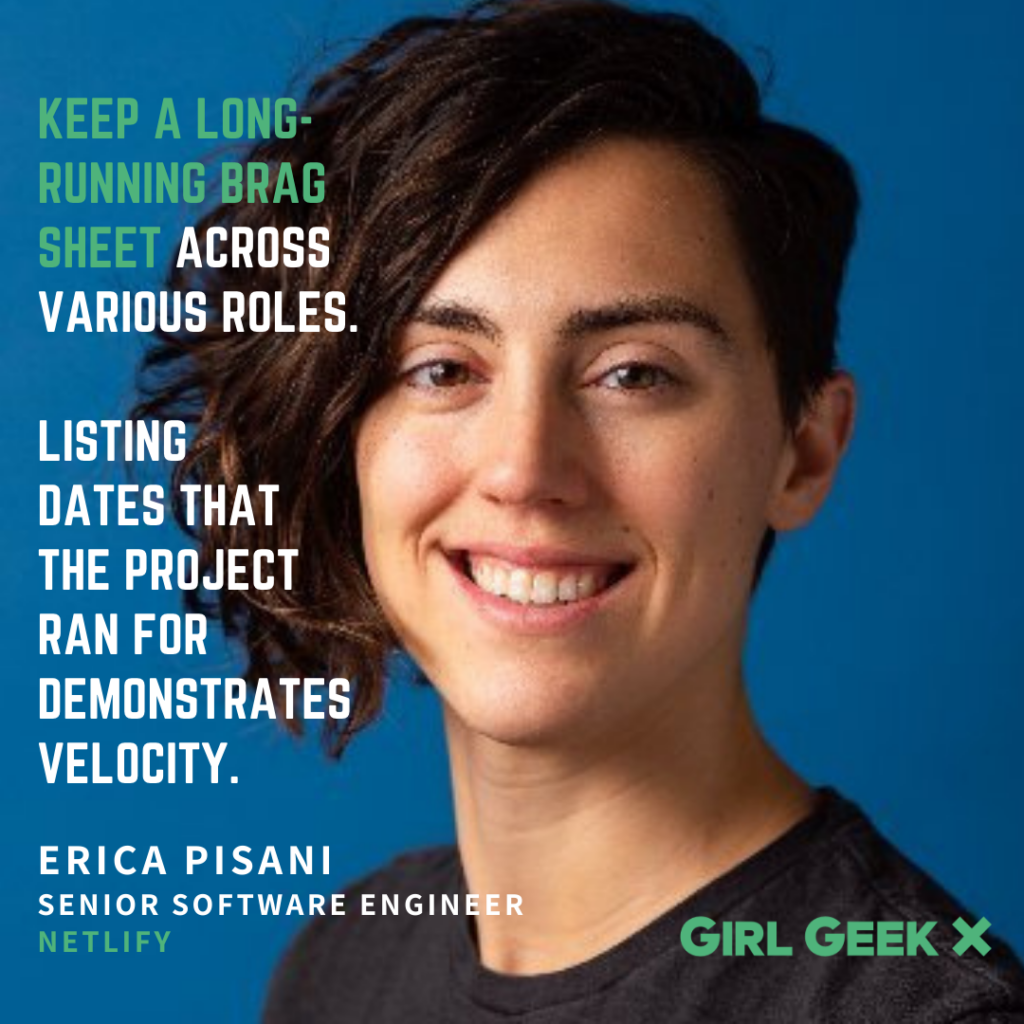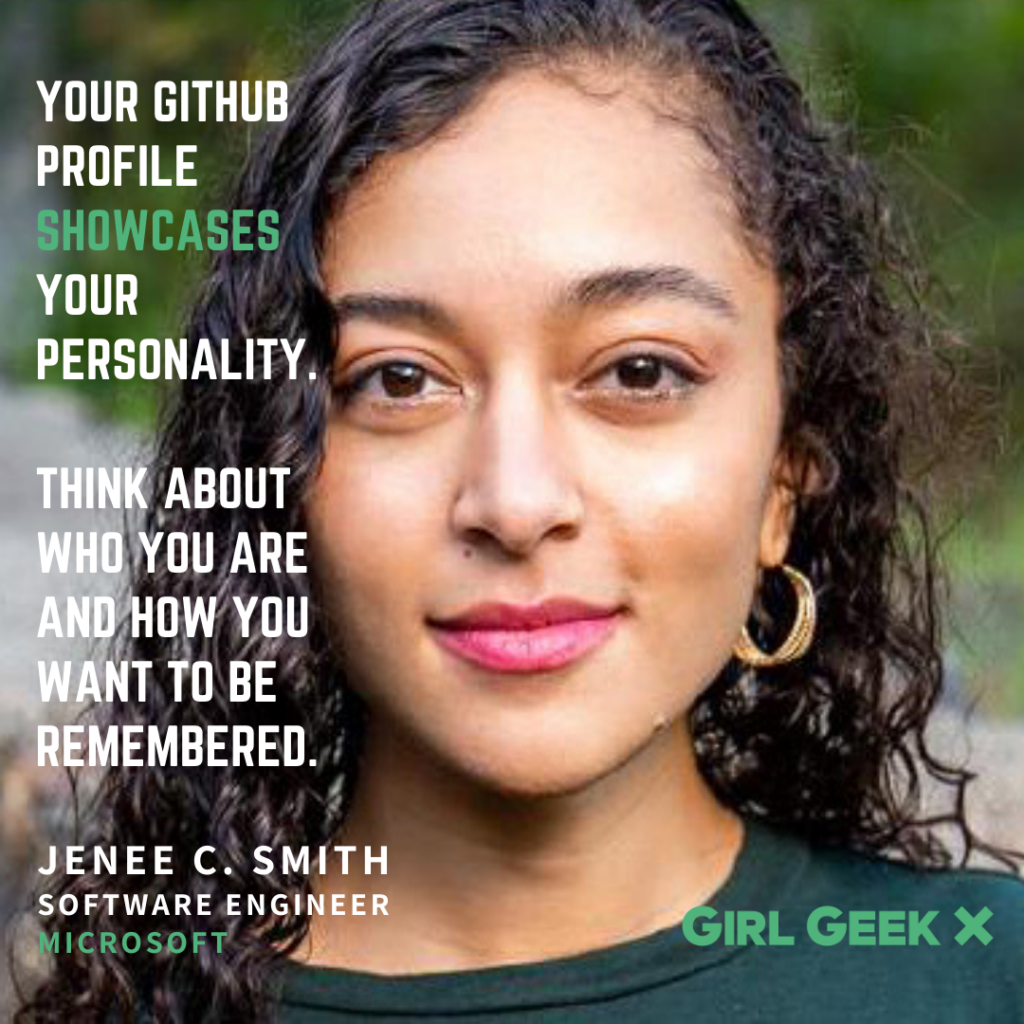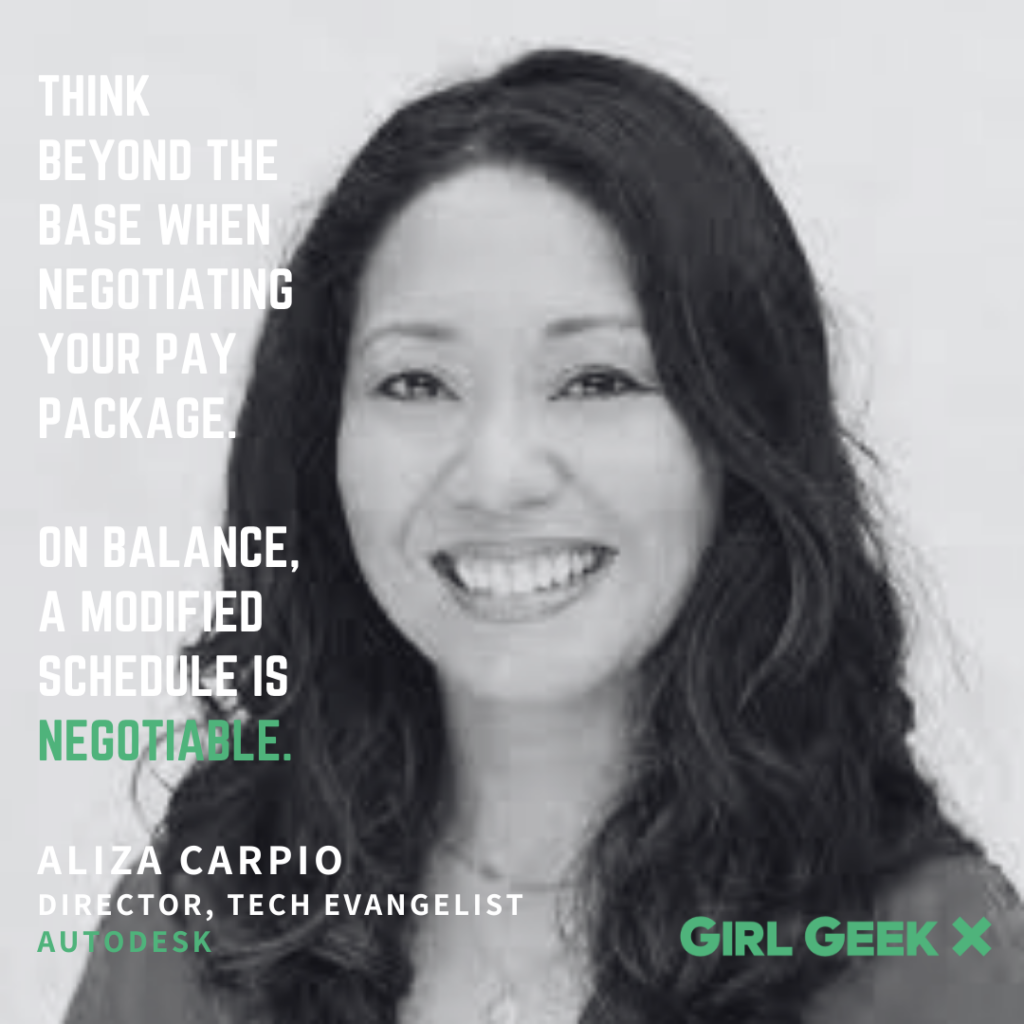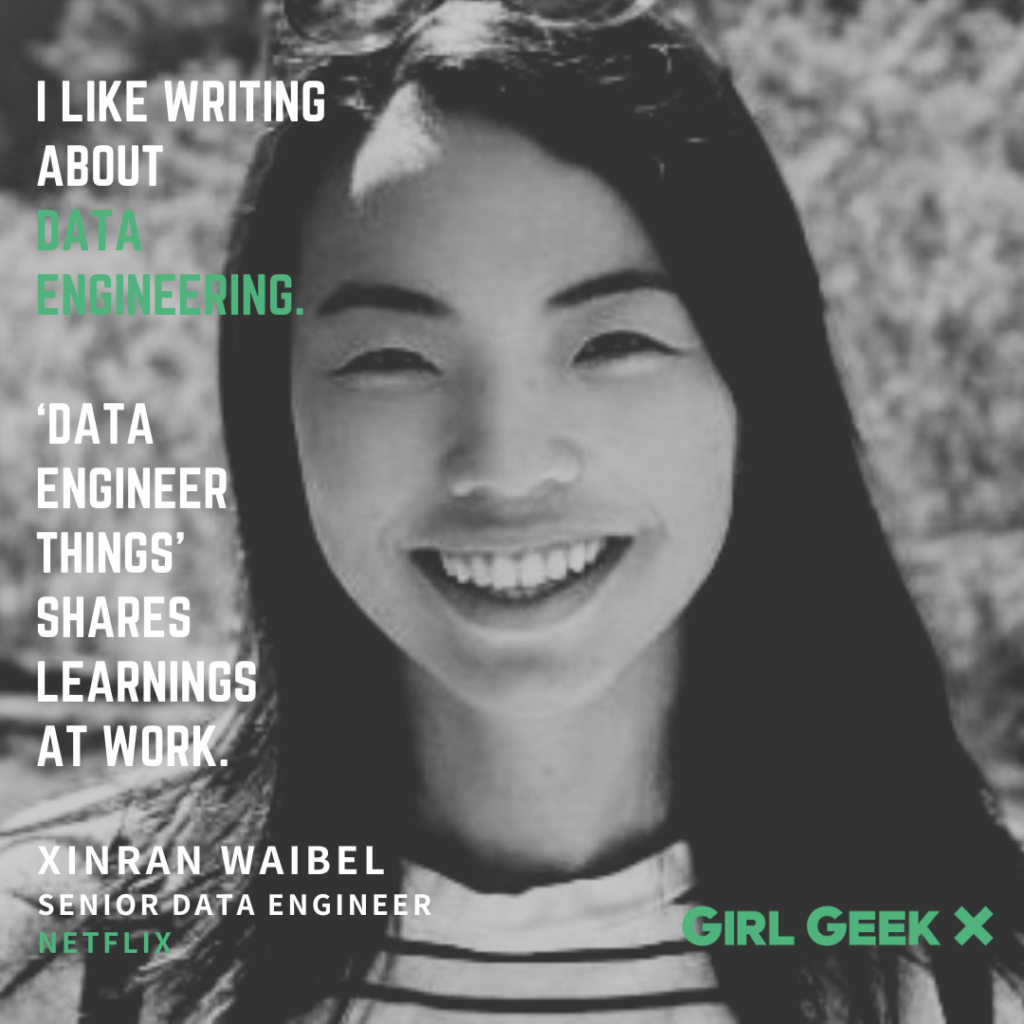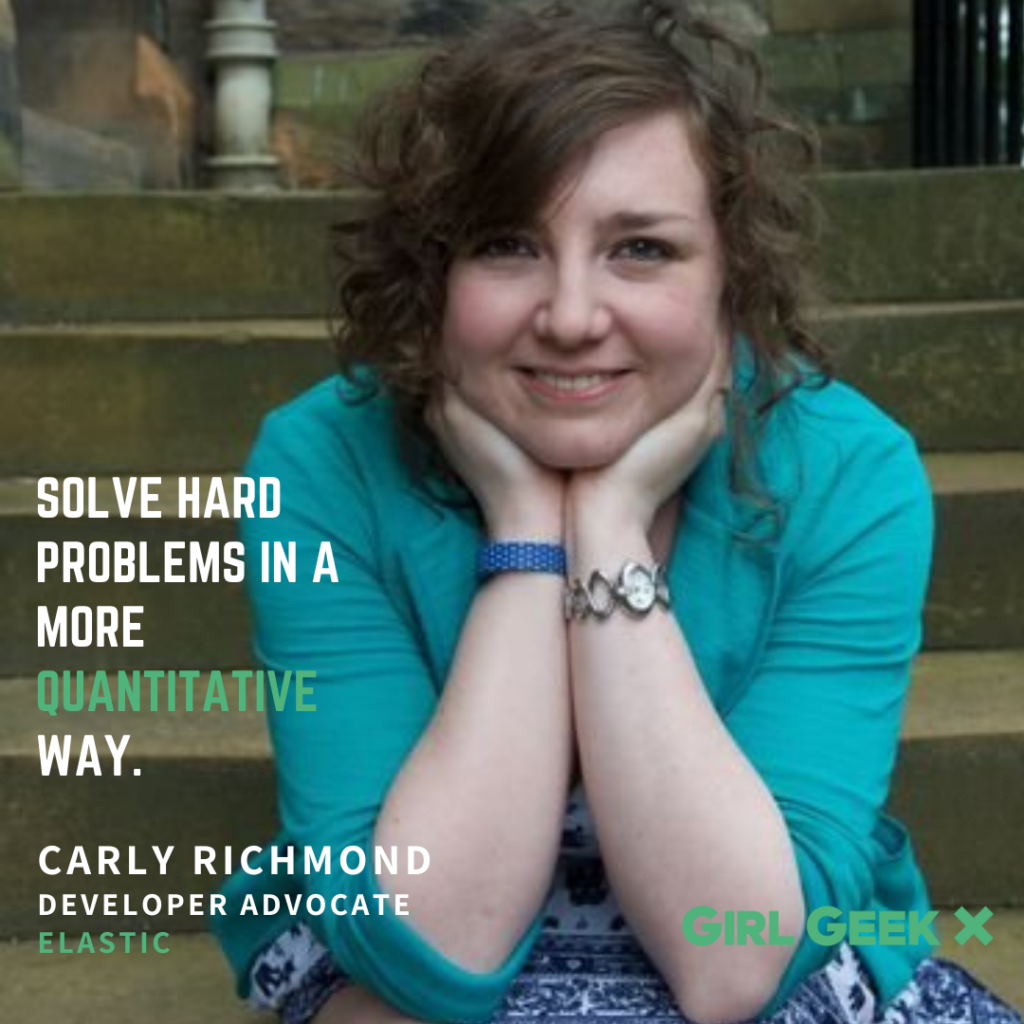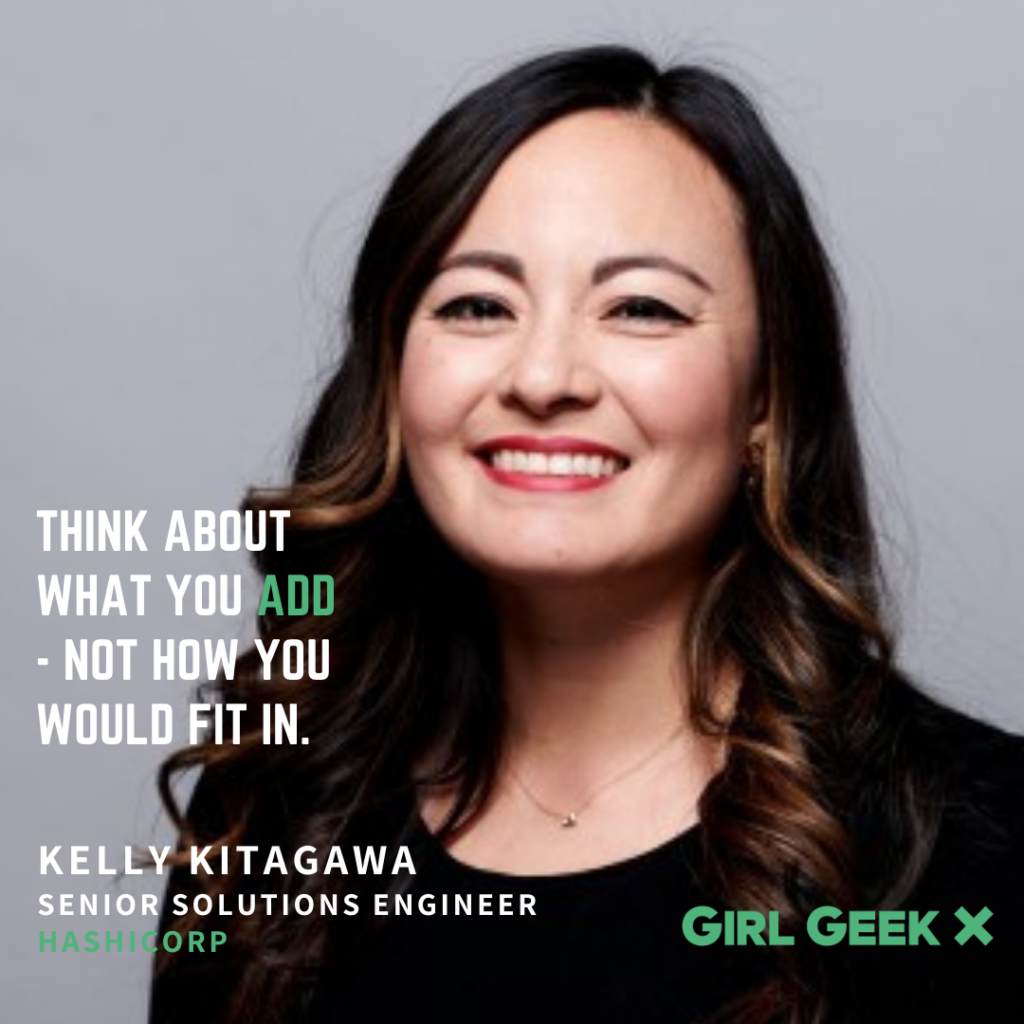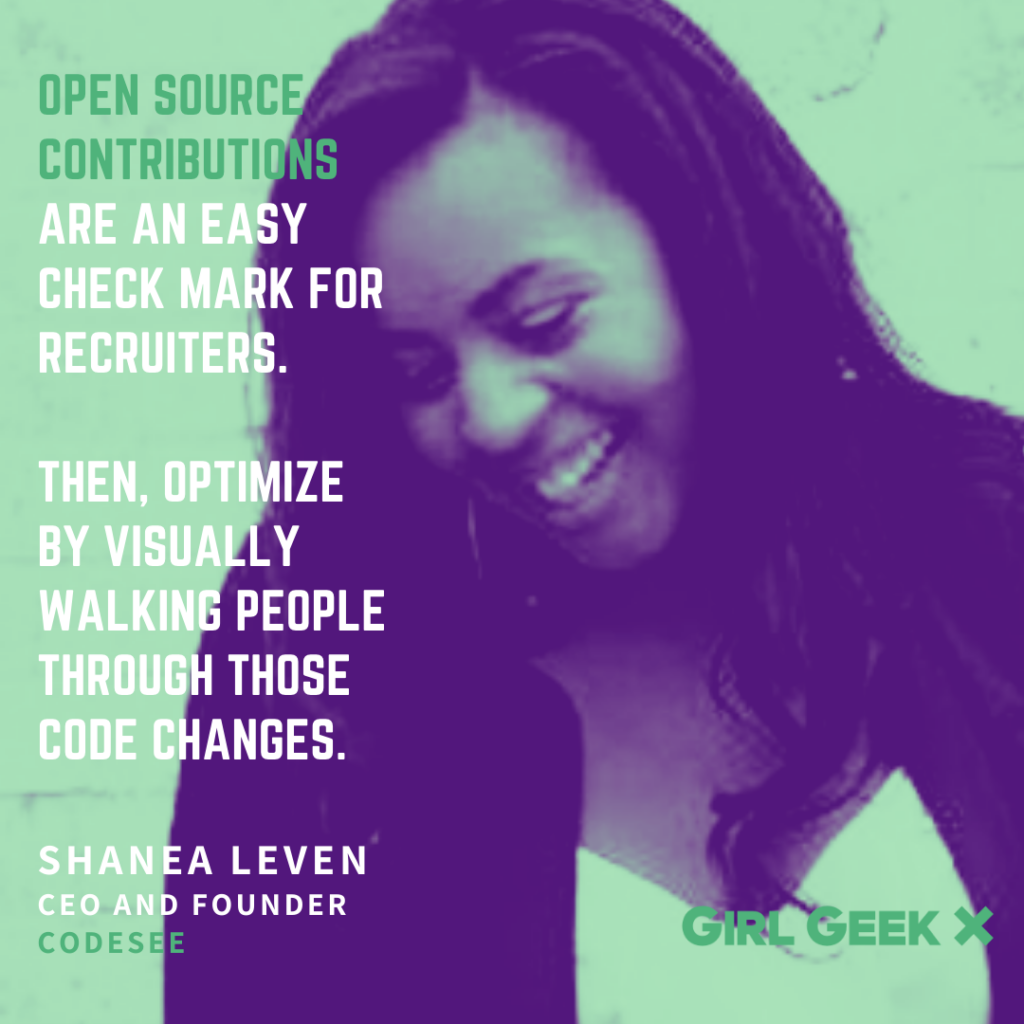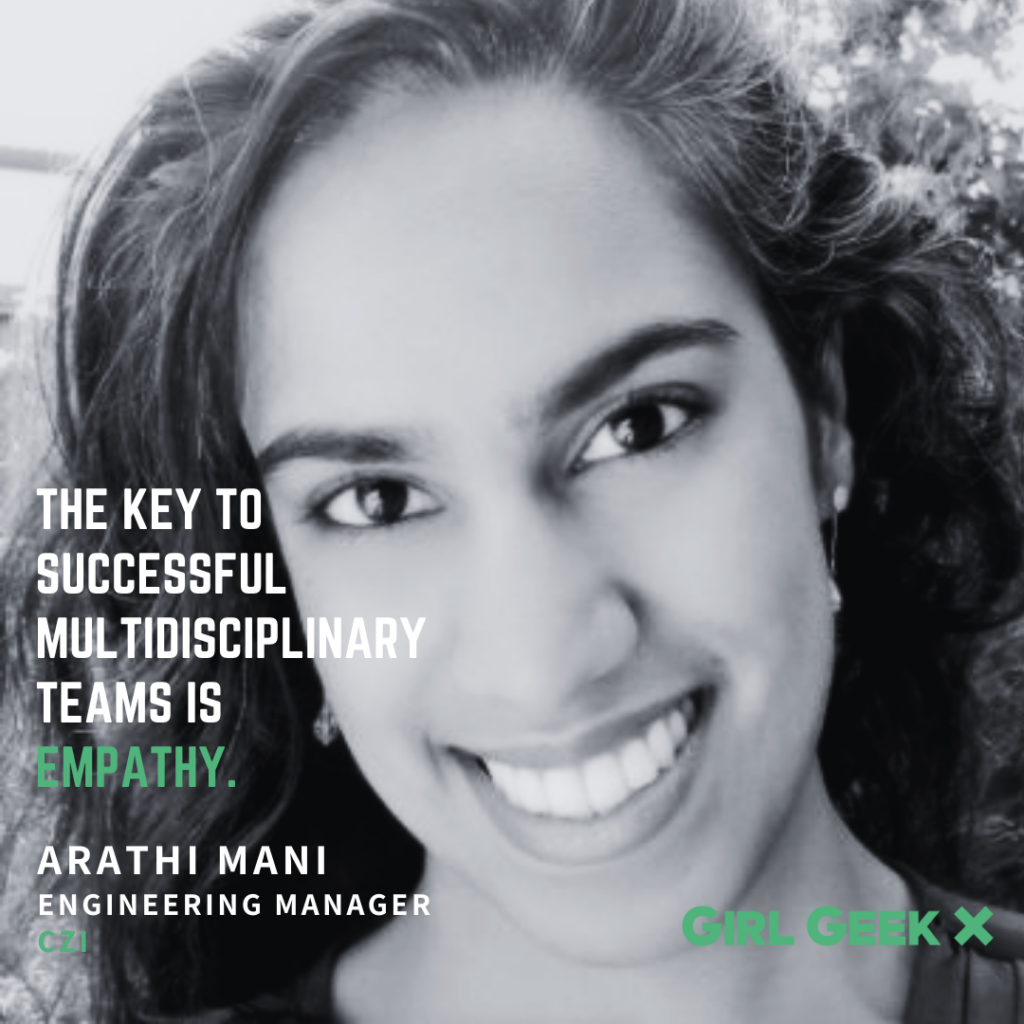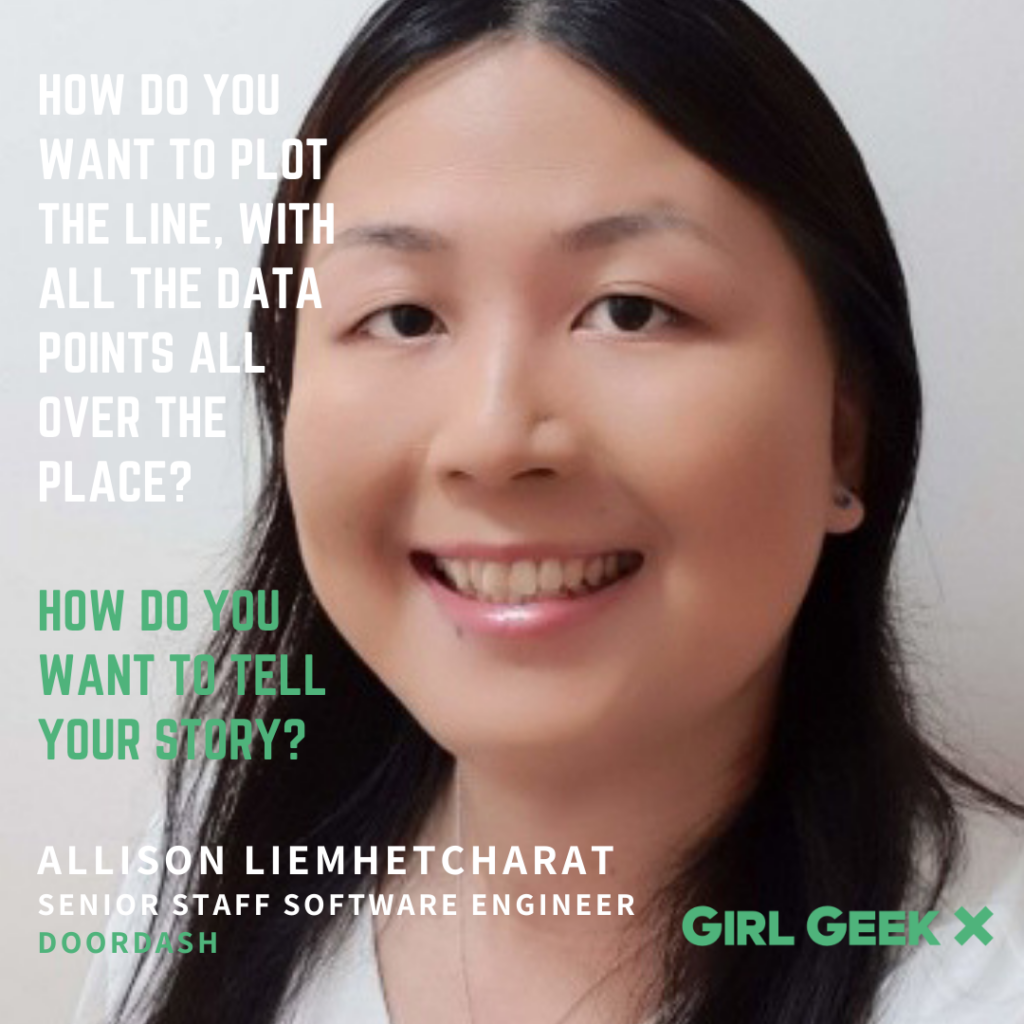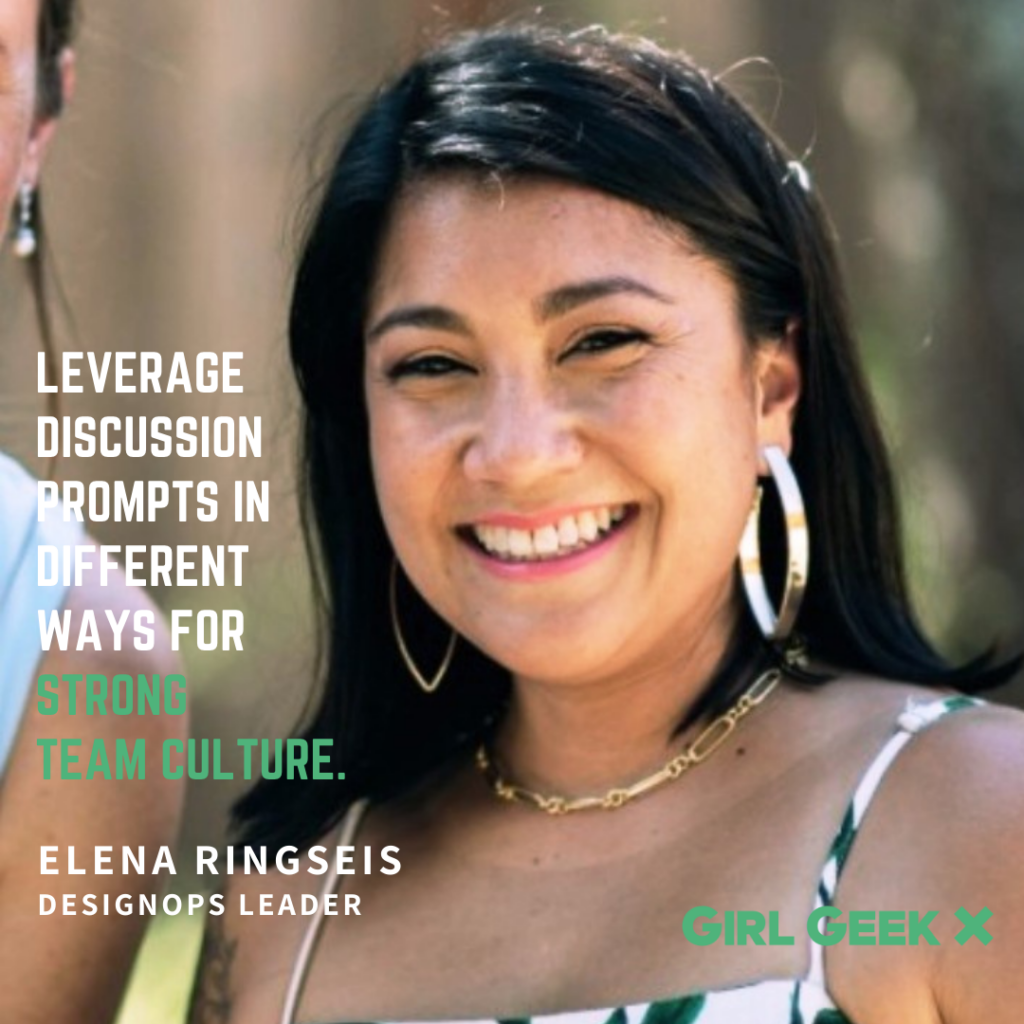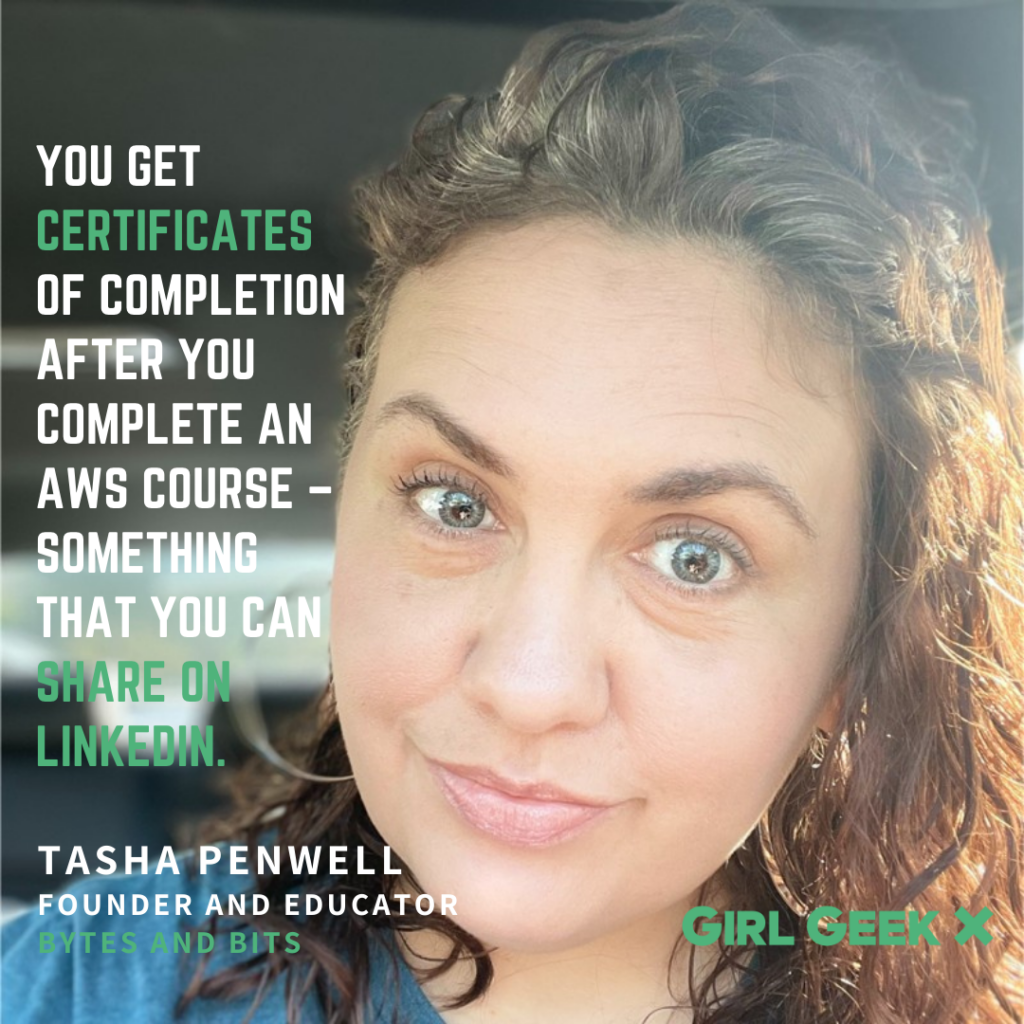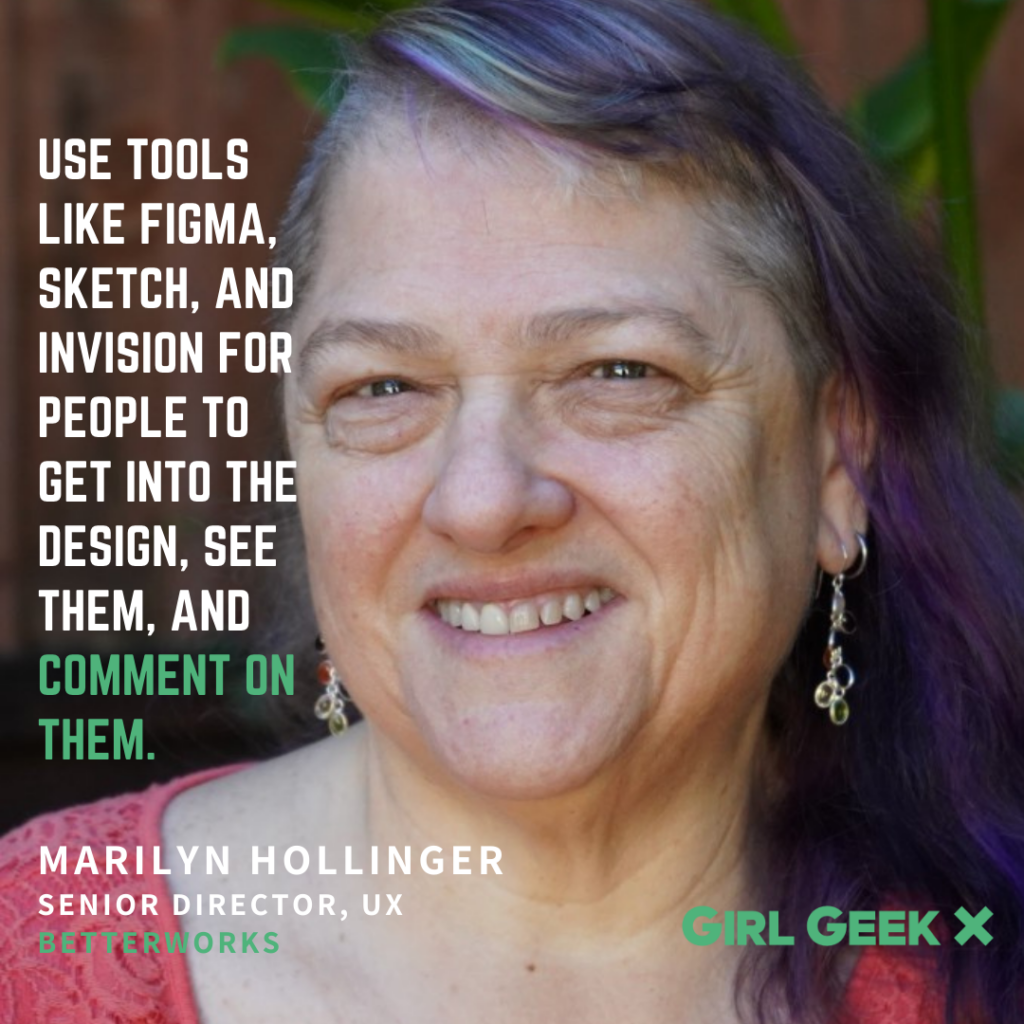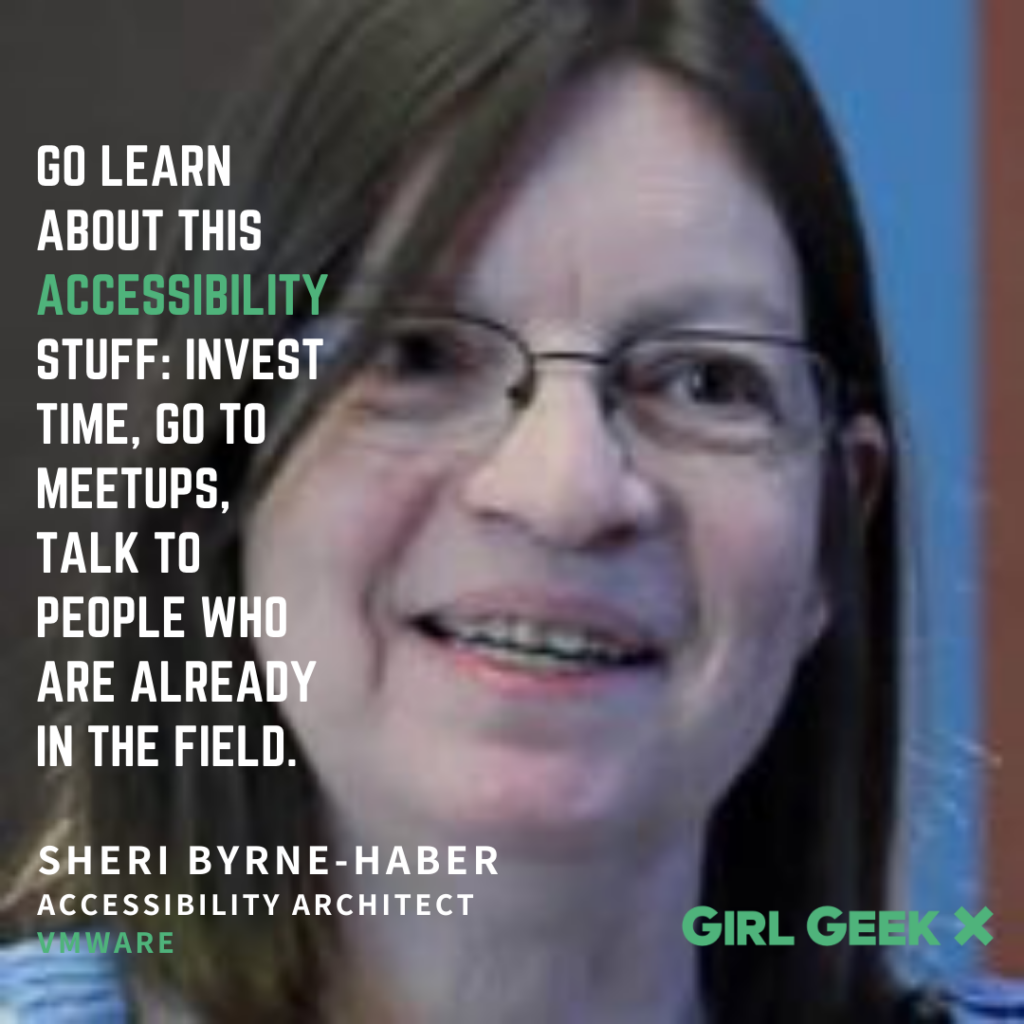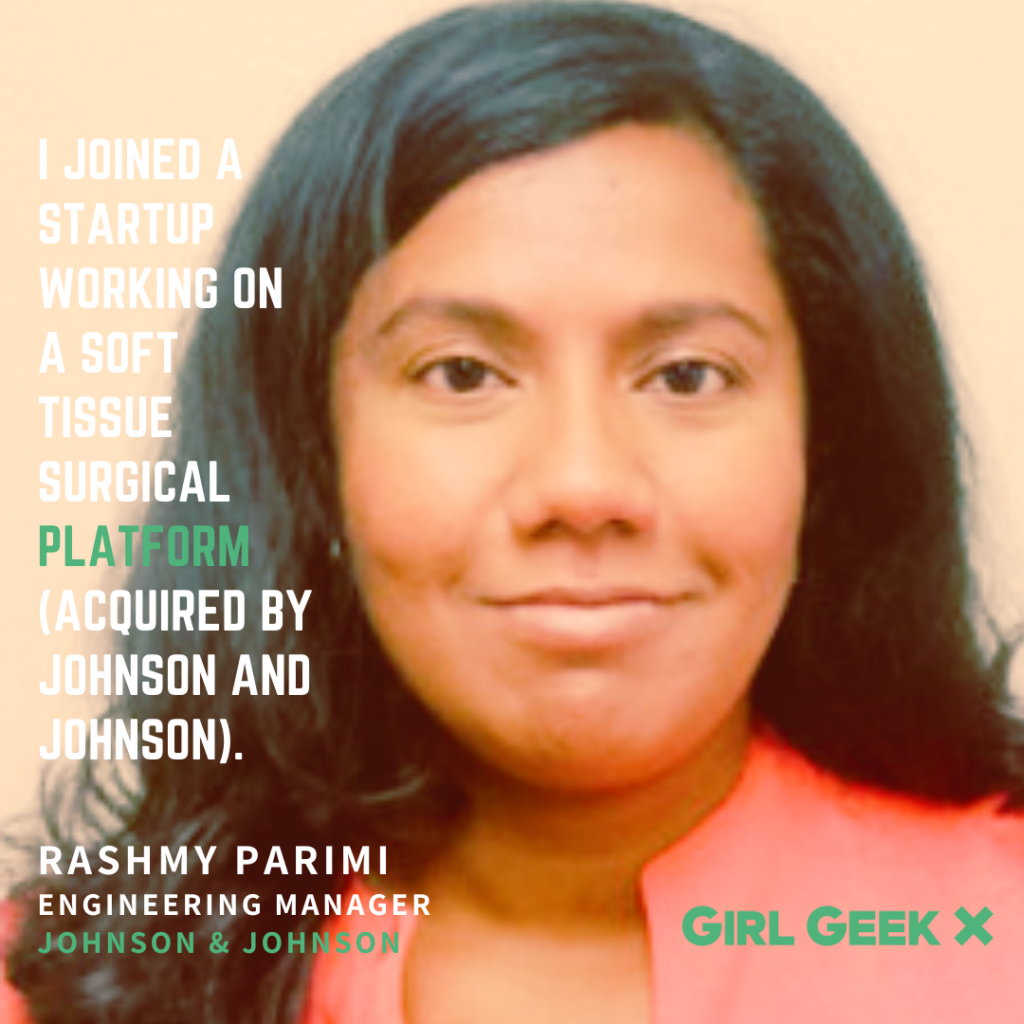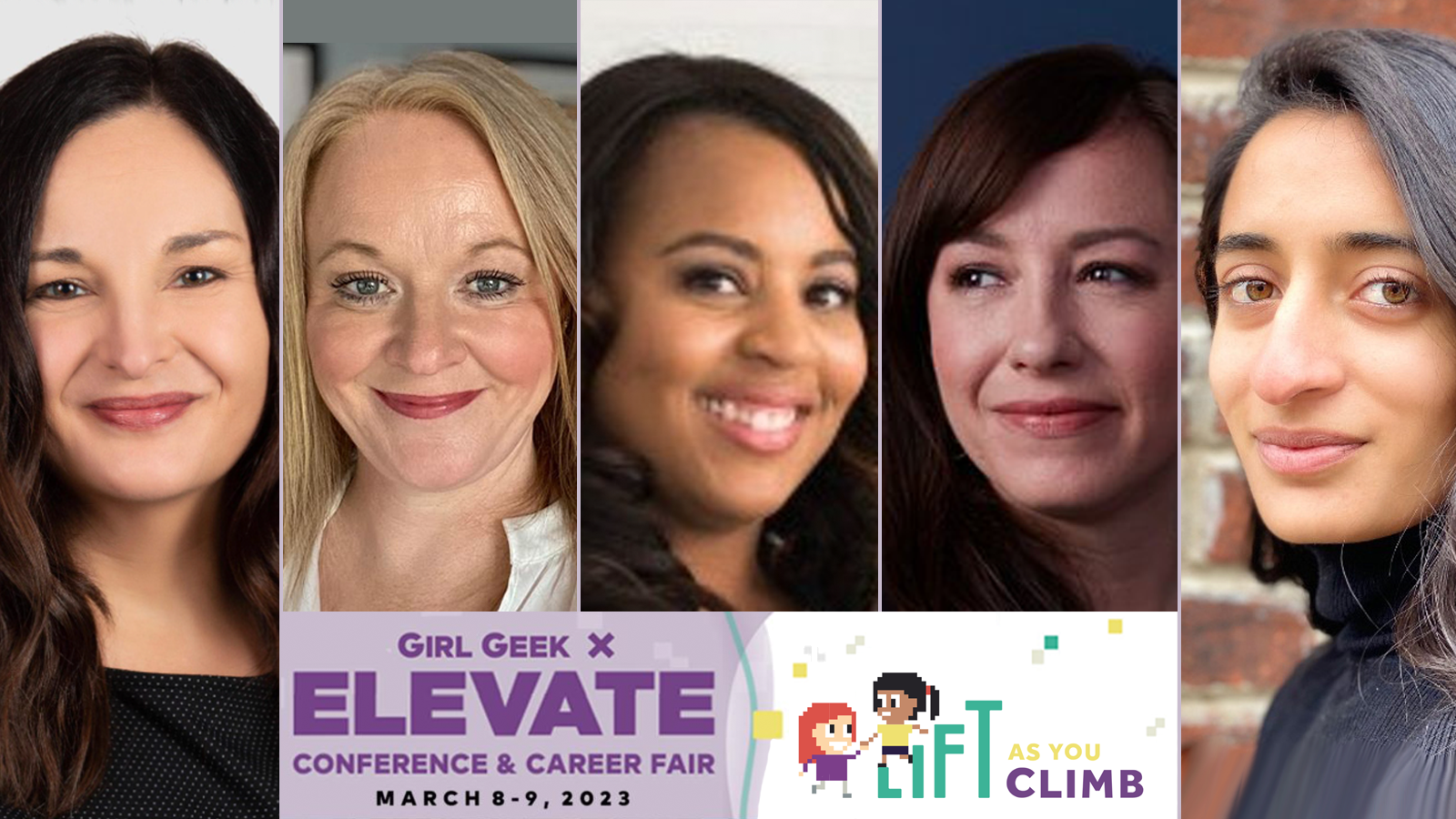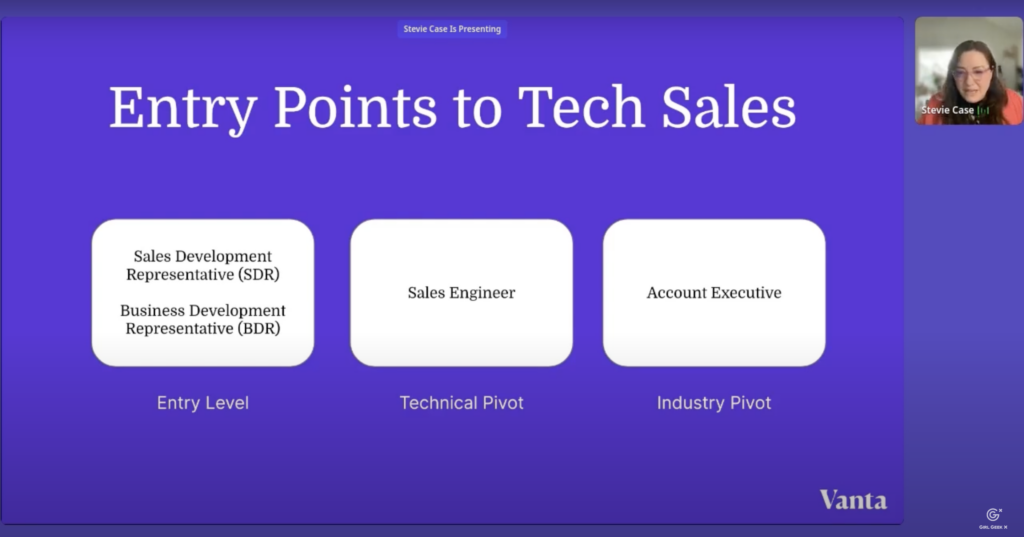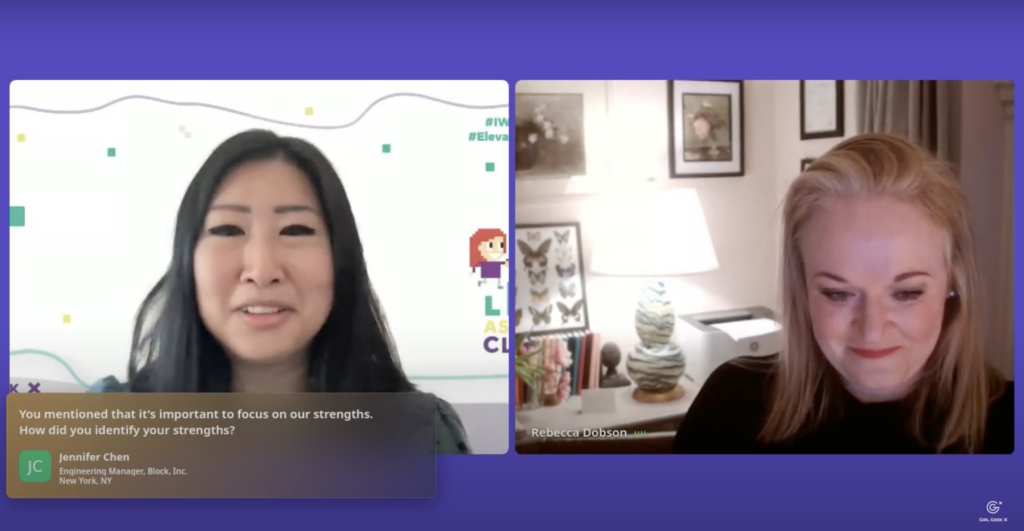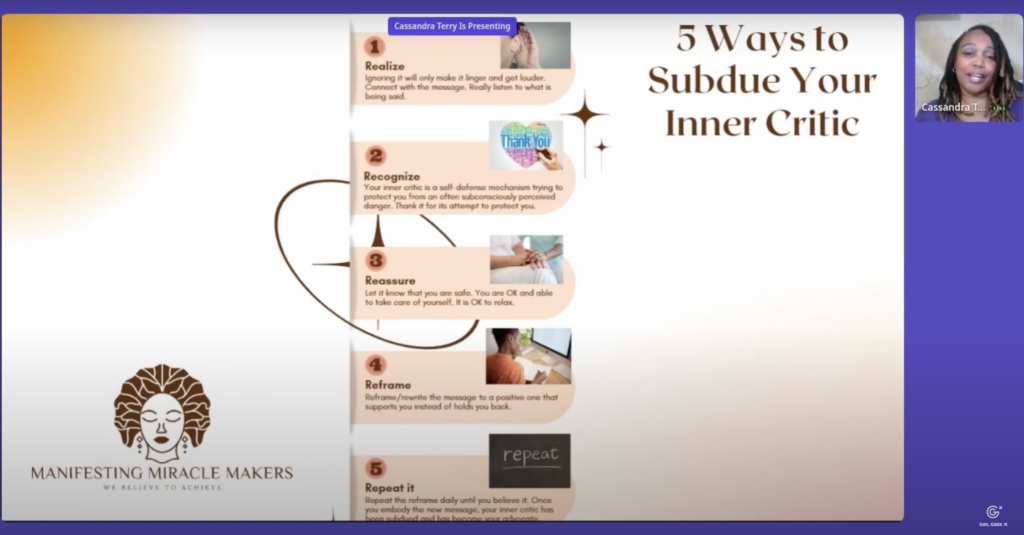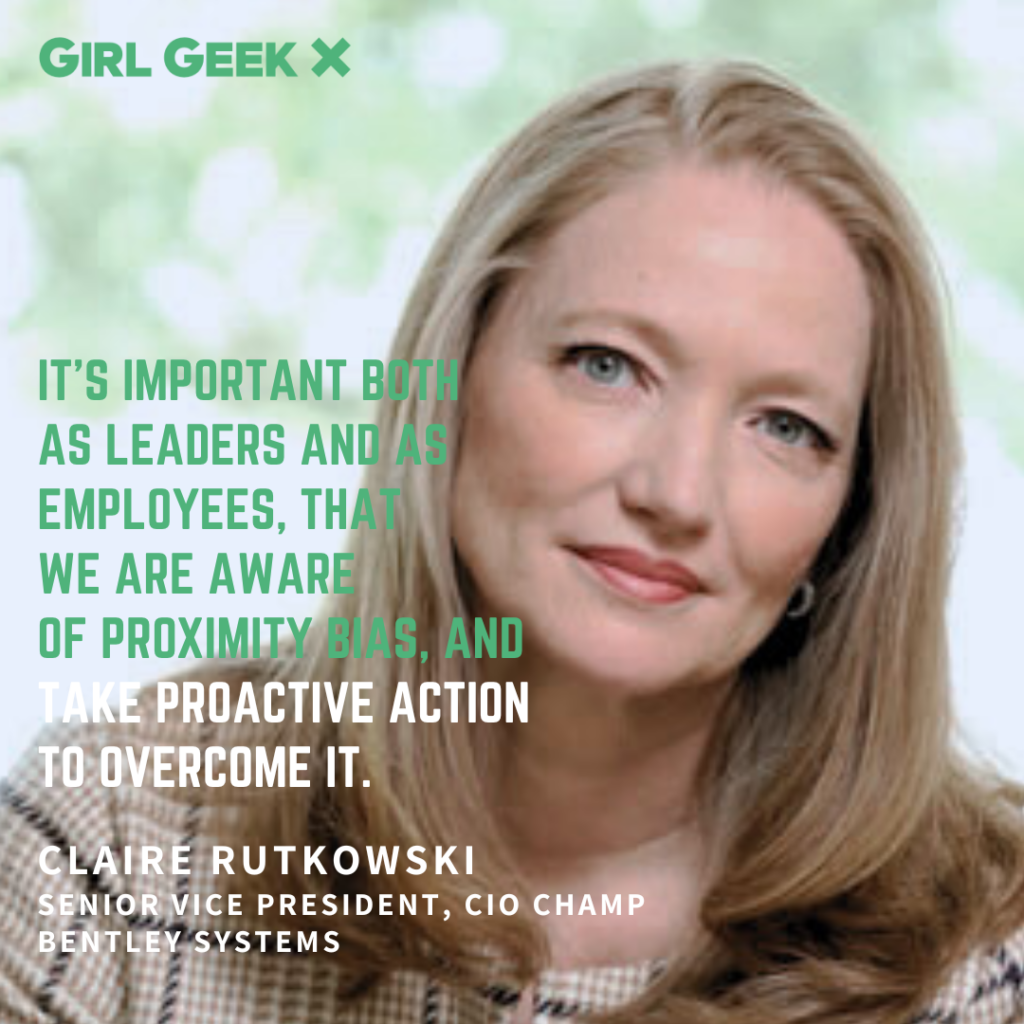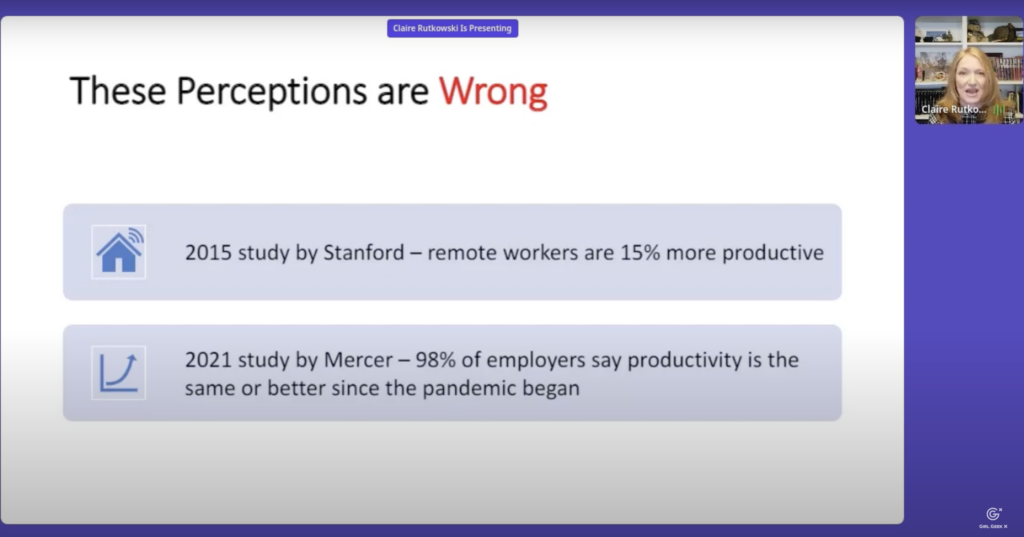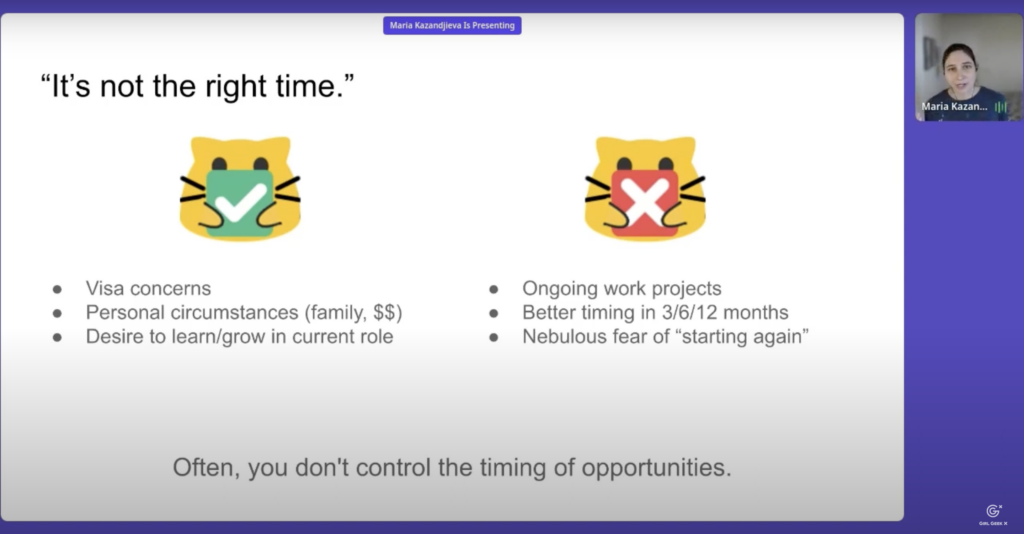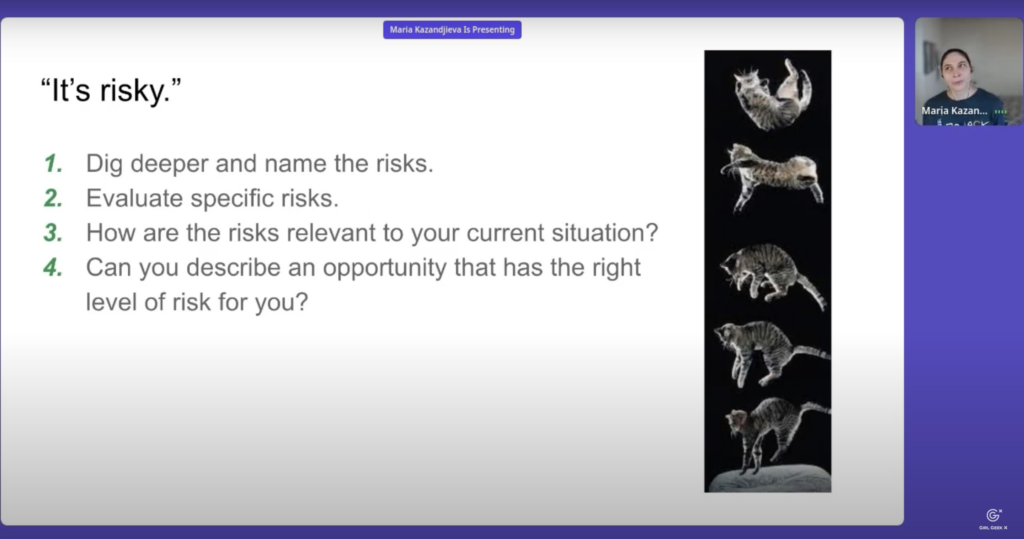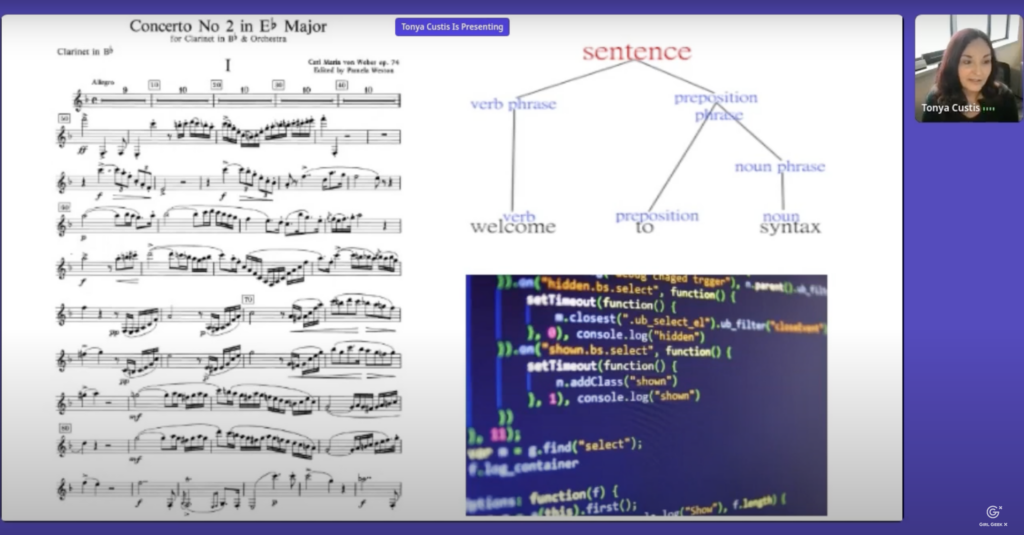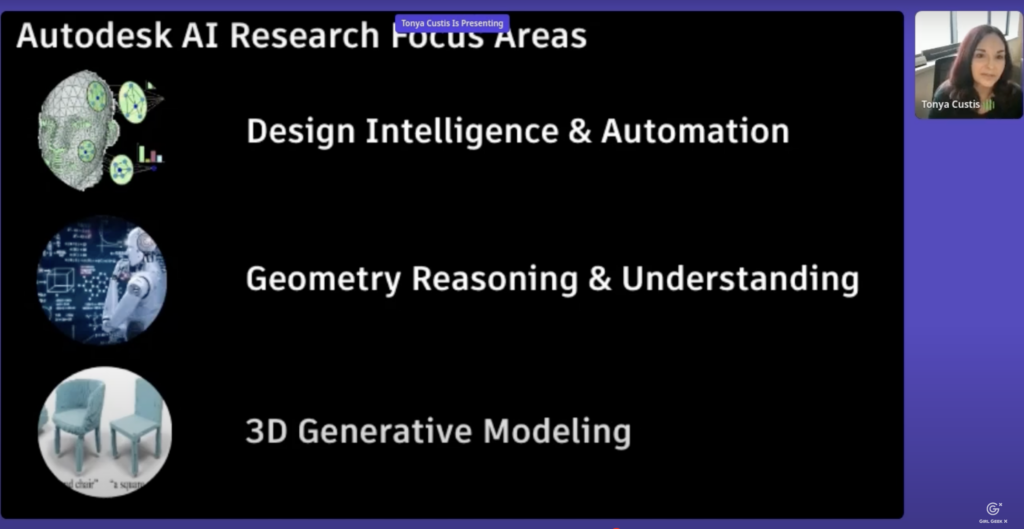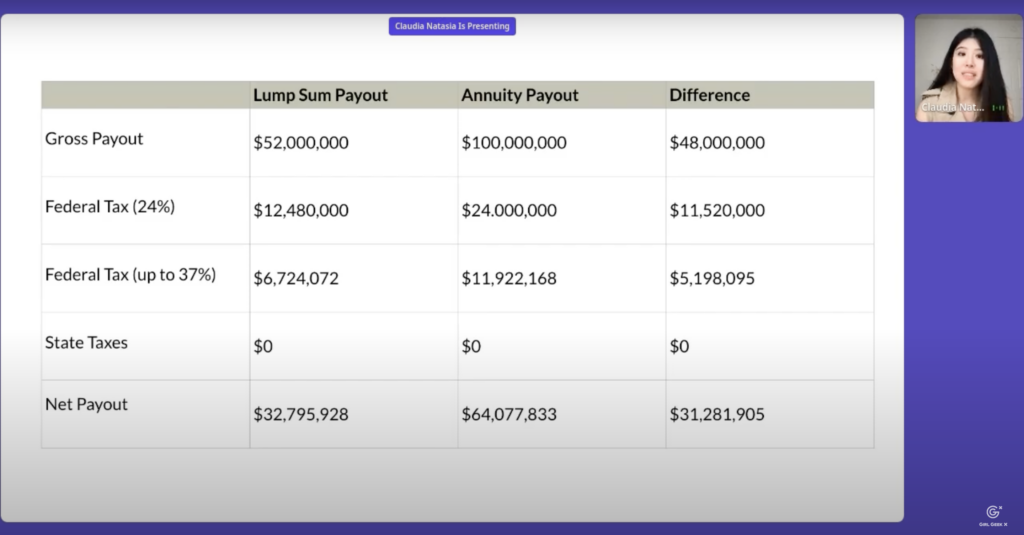March is Women’s History Month! Do you recognize Shanea (pictured, middle)? She is regularly featured as stock photography as a modern corporate woman, thanks to that #WOCINTECHCHAT photoshoot!
Today, Shanea Leven is the CEO and founder of CodeSee, a venture-funded startup in San Francisco that raised over $11 million in funding to date. She’s now scaling her dev tools company, helping developers onboard to codebases, gave a talk on Int’l Women’s Day AND led a developer workshop at the Girl Geek X Career Fair. Black founders raise 1% of all venture capital dollars in the United States, so this Black female founder is exemplary and exceptional.
We are proud of these ambitious technical women making history with glass-breaking insights on tech careers, self-care, ambition, career pivots, squiggly career paths, optimizing your resume for the ATS and recruiter, and much more. We have been so excited to host Shanea and 40+ incredible women in tech as speakers at ELEVATE 2023 Conference & Career Fair!
Don’t miss their key career advice and action items, with links to their inspiring videos and transcripts below – be sure to bookmark this heavily-resourced and inspiration page, and share with your job-seeking friends this link (GIRLGEEK.IO/JOBS) – Please help a girl geek find her next job in tech!
#1 – Stevie Case – “If you want to build an incredible career with a non-traditional background, my number one tip is that the online application pretty much will never cut it.“
Stevie Case (Chief Revenue Officer at Vanta) believes that the perfect resume is a myth, high level tech sales roles can be done by almost anyone, and that these roles should be the #1 pathway into tech. She shares her own career path (including being the first professional female gamer) and encourages women to embrace discomfort to grow. You can watch her keynote “Don’t Think You’re Qualified for a Position in Tech? Apply Anyway” on YouTube or read the full chat transcript.
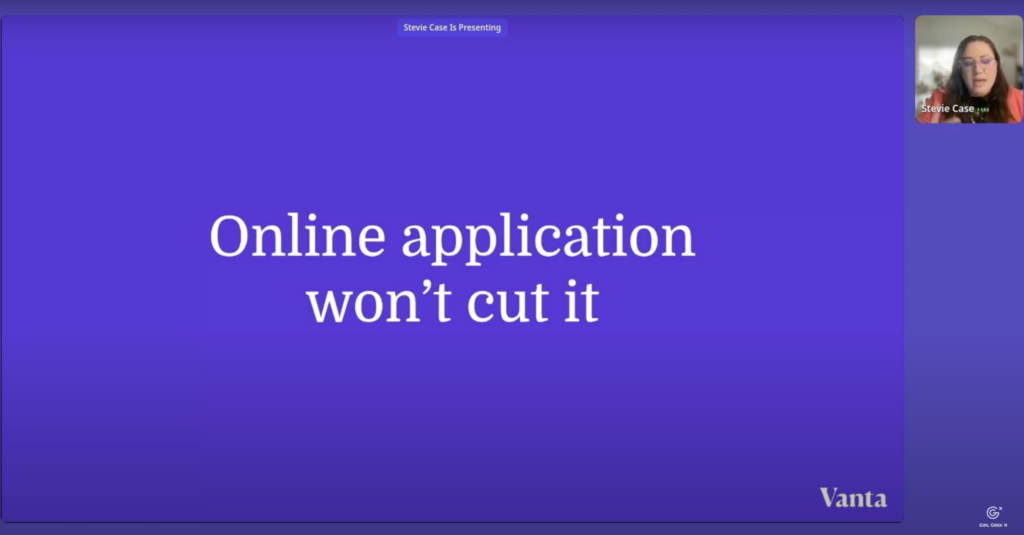
#2 – Rebecca Dobson – “Make sure you are creating opportunities as well as taking things that are offered to you.“
Rebecca Dobson (Corporate Vice President, EMEA at Cadence) believes ‘success’ is very personal. She shares her career journey from startups to big semiconductor companies, and talks about dealing with personal and professional setbacks, and how you can achieve your goals. You can watch her talk “Own It! Tenacity, Dealing With Setbacks and Being Resilient” on YouTube or read the full chat transcript.
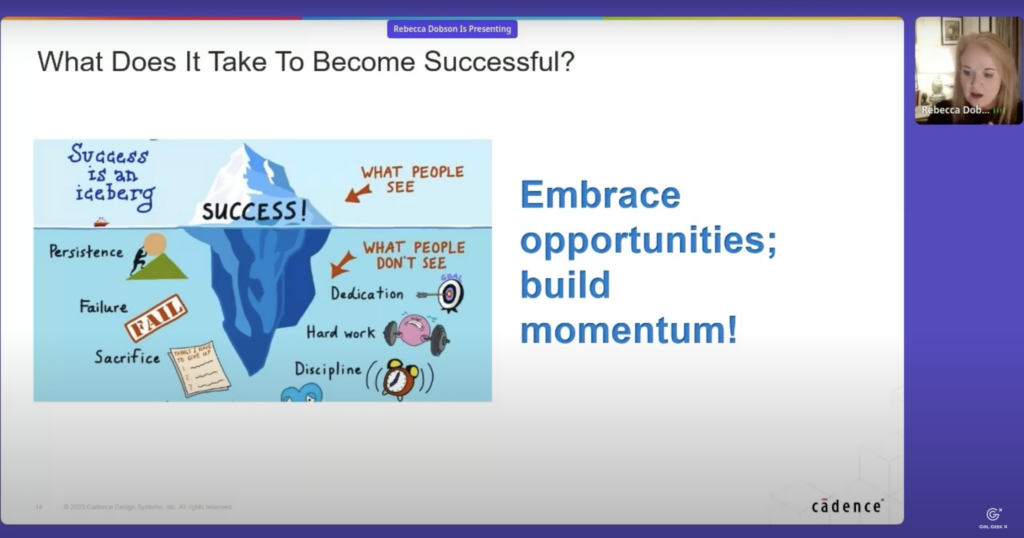
#3 – Cassandra Terry – “Which of these self-limiting behaviors is a growth opportunity for you?”
Cassandra Terry (Chief Risk Officer, Security Development at IBM) talks about how to connect with your inner voice and began to reframe the self-limiting beliefs that you discover. She introduces 5 R’s to repeat until you successfully rewrite your limiting beliefs. You can watch her talk “The Voice Within Wins” on YouTube or read the full chat transcript.
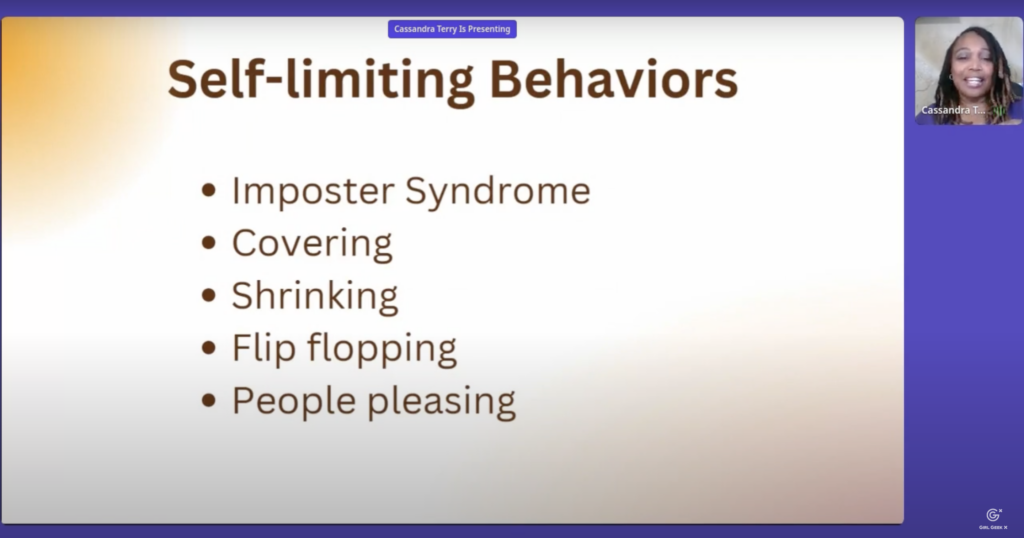
#4 – Claire Rutkowski – “Managing up is really important and it’s your responsibility, not your manager’s responsibility.”
Claire Rutkowski (Senior Vice President, CIO Champion at Bentley Systems) discusses how to create an environment which has no proximity bias, specific ways to overcome proximity bias where it does exist, and shares tactics to ensure your value is noticed and rewarded. You can watch her talk “Overcoming Proximity Bias” on YouTube or read her full chat transcript.
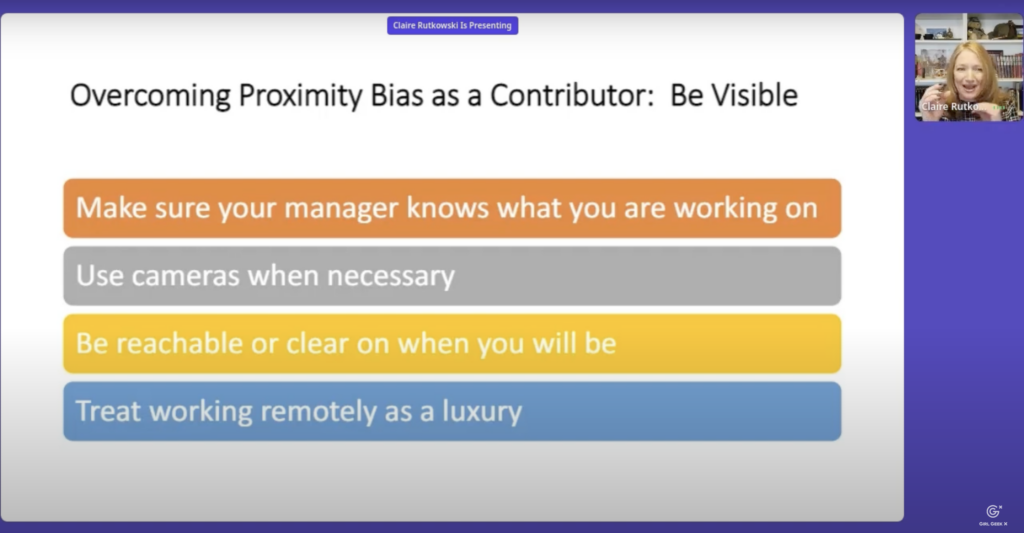
#5 – Aastha Gupta – “It’s self-care, fundamentally, especially when you become parents, when you’re in parenthood, we start to put a partner, a marriage, children, work, before us.”
Aasha Gupta (Senior Director of Product at Meta) is a cancer survivor sharing stories of ambition, burnout, resilience – valuable lessons – on the importance of ruthless prioritization, letting go of mom guilt, and self-care, in conversation with Sukrutha Bhadouria. You can watch her fireside chat “Cancer Survivors on Career Ambition, Ruthless Prioritization, and Self Care” on YouTube or read her full chat transcript.
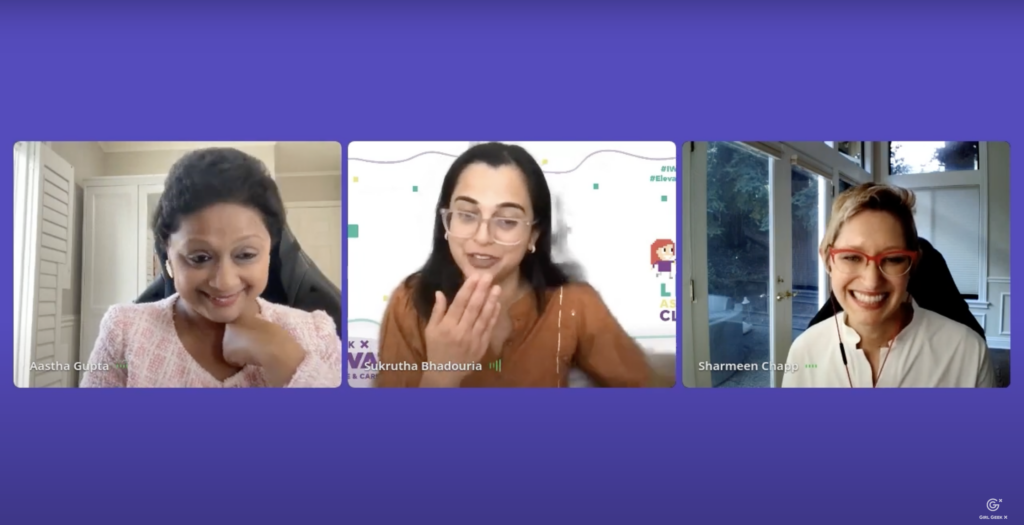
#6 – Sharmeen Chapp – “The hardest part of my cancer journey was the mom guilt of not being able to pick up my son for eight weeks. Not the chemo, when I couldn’t get out of bed all day, or help myself, or change my own clothes after surgery. The mom guilt.”
Sharmeen Chapp (Senior Director of Product at Meta) is a cancer survivor sharing stories – and valuable lessons – on the importance of ruthless prioritization, letting go of mom guilt, and self-care, in conversation with Sukrutha Bhadouria. You can watch her fireside chat “Cancer Survivors on Career Ambition, Ruthless Prioritization, and Self Care” on YouTube or read her full chat transcript.
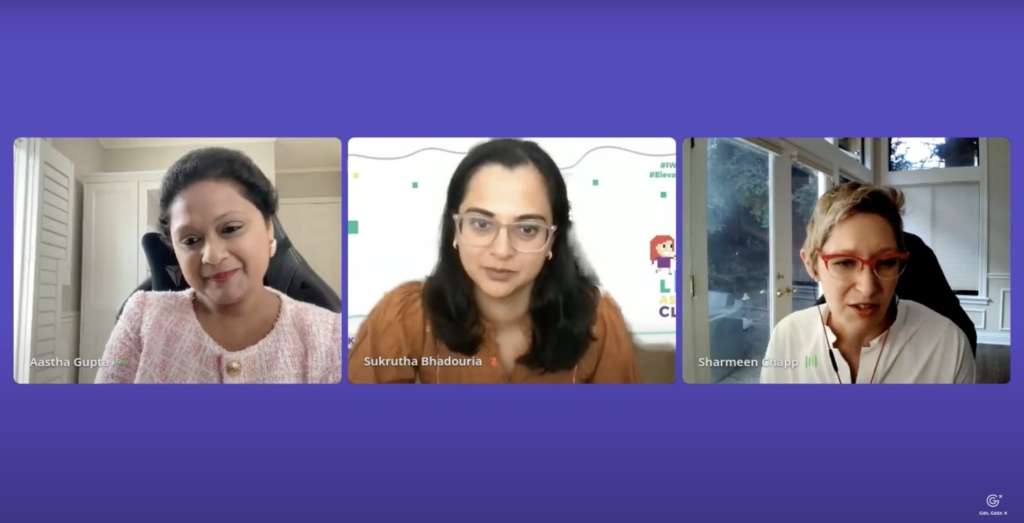
#7 – Maria Kazandjieva – “Let’s talk about the ‘it’s risky‘ thought-terminating clichés. List the risks. Specific risks. Evaluate the new unknown opportunity. Evaluate some of the risks in your current role, a fairer comparison.”
Maria Kazandjieva (Engineering Leader and Co-Founder at Graft) speaks about how to honestly evaluate an opportunity and understand when is the optimal time is to make a move. She encourages you to investigate thought-terminating clichés. You can watch her talk “From Netflix to Co-Founding a Startup and How to Make ‘Scary’ Career Choices” on YouTube or read her full chat transcript.
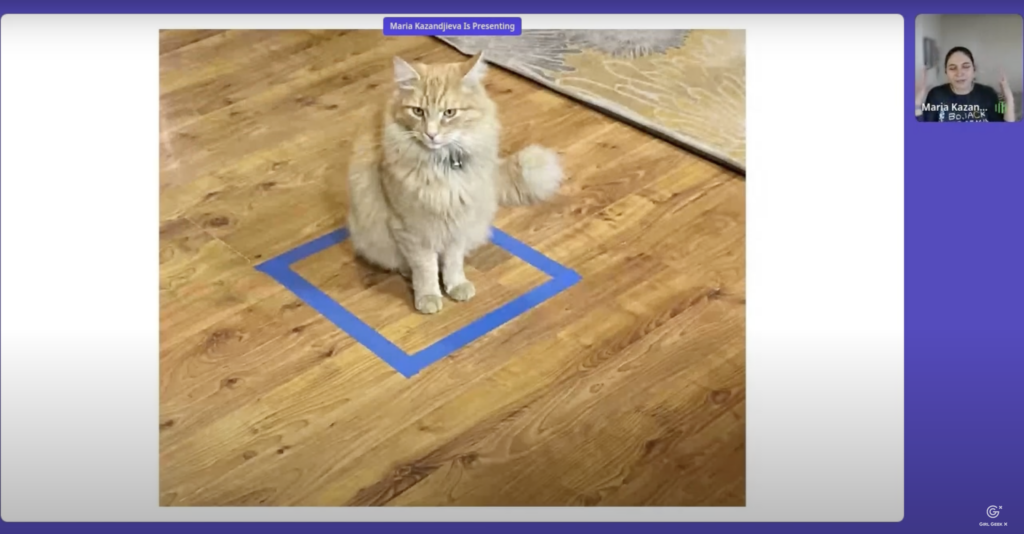
#8 – Dr. Tonya Custis – “I learned so much from playing roller derby. The best lesson was like research. It doesn’t matter how many times you fall down, as long as you get up again.”
Dr. Tonya Custis (Director of AI Research at Autodesk) shares how she learned about management and strategy by playing both offense and defense as a roller derby skater. She talks about her team’s research papers, making designers’ jobs easier by using AI to reverse-engineer objects and assemblies into sketches and CAD models, as well as generating the designs themselves. You can watch her talk “Designing AI for Designers” on YouTube or read her full chat transcript.
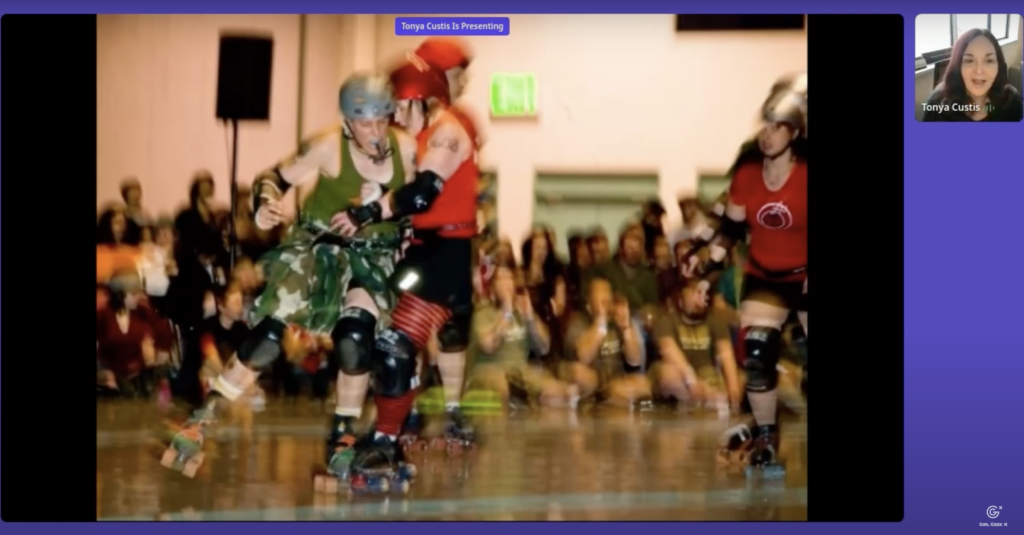
#9 – Claudia Natasia – “My mom took me, when I was 5 years old, to business meetings at banks across Jakarta’s financial district. Sometimes I had the privilege to watch her close deals. I learned it’s important to build businesses and enterprises that last.”
Claudia Natasia (Director of Product Insights at Highspot) talks about how to build and structure a team that supports strategy and growth, to to calculate the impact of investments and results against financial models (e.g. discounted cash flow), and how to speak the language of investors and c-level, so your team will be leveraged as a strategic hedge against negative impacts of a recession. You can watch her talk “Hedging For Revenue In Recessions Through UX Research” on YouTube or read her full chat transcript.

#10 – Maya Israni – “The government is entrusted to provide critical services and programs to the public. And the types of services that we work on and the people that we’re impacting. The scope is enormous.”
Maya Israni (Director of Engineering, U.S. Digital Service) shares her journey to government and civic tech, and her experience leading government engineering teams. She dives into the types of projects that engineers work on, along with how to apply your technical skills to improve government programs and services for millions of people across the country. You can watch her talk “From Private to Public: Leading in Government Tech” on YouTube or read her full chat transcript.
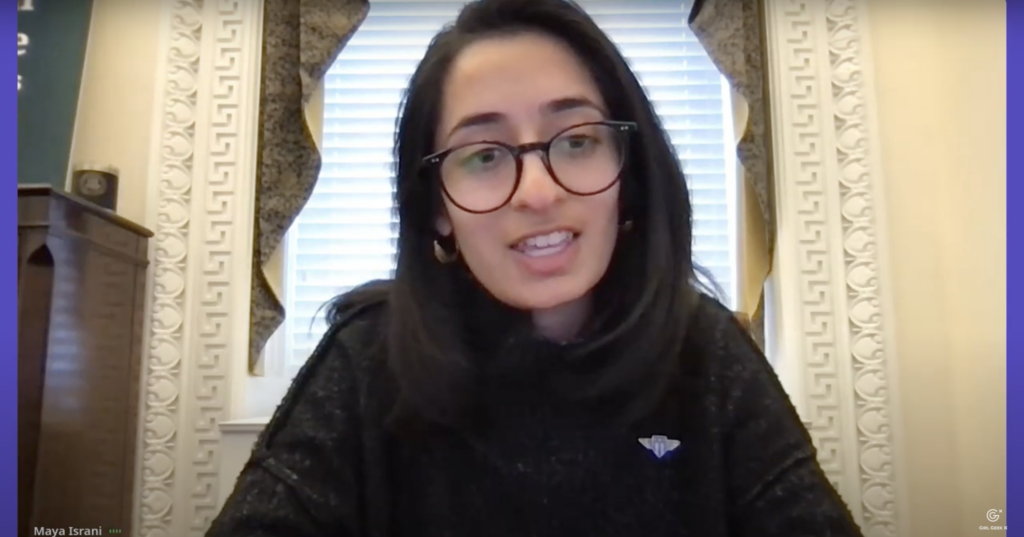
#11 – Kimberley Parsons – “When you’re leading without formal authority or role, that’s where the relationship piece becomes important. Build the relationship. Practice inquiry and curiosity.”
Kimberley Parsons (CEO of Bamboo Teaming) shares a time-tested approach distilling team functioning into four interrelated dimensions, with concrete guidance to implement for improved team performance. She explores common “hot spots” that can make or break team functioning, and the corresponding team leadership behaviors you can cultivate to overcome. You can watch her talk “What Every Leader Should Know To Catalyze Higher Team Performance” on YouTube or read her full chat transcript.

#12 – Jessica Sahagian – “Many neurodiverse women don’t know they’re neurodivergent. Consideration of neurodiversity should be given to everyone. Pick a career that works with who you are, not against it.”
As an ADHD/autistic, Jessica Sahagian (Director of Engineering at connectRN) discusses why women’s neurodiversity gets overlooked, provides tips on how to attract and hire neurodiverse candidates, shares tips for making your atmosphere conductive to amplifying ND voices, and inspires you to shine as a neurodiverse woman in a neurotypical work world. You can watch her keynote “Neurodiversity @ Work” on YouTube or read her full chat transcript.
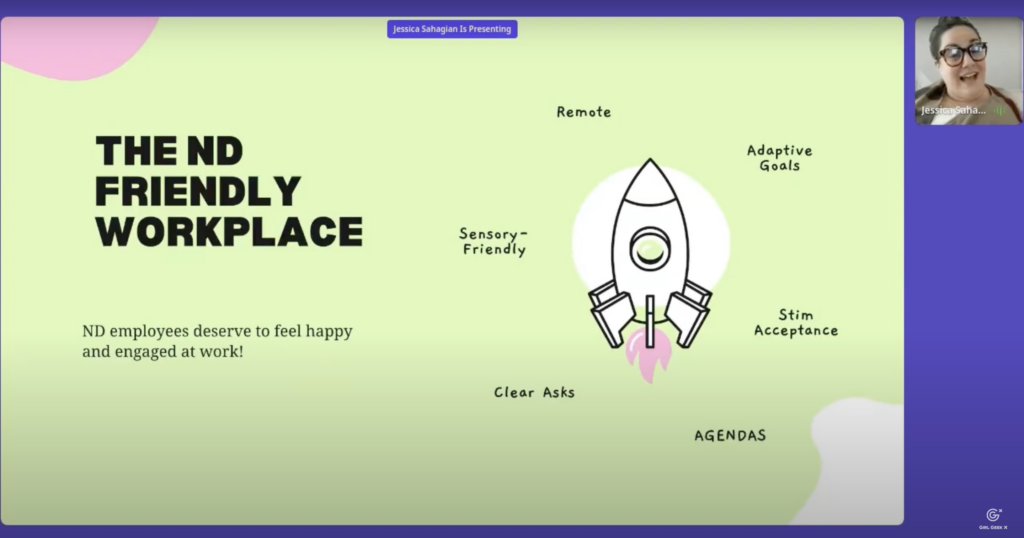
#13 – Luiza Pena – “We need to be intentional about forming relationships, and build our networks. Stakeholder awareness is understanding key people to help you amplify your impact toward the next step in your career.”
Luiza Pena (Lead Application Engineer at Cadence) talks about the 4 allies you need in your career to facilitate growth. She discusses the challenges of remote work regarding career development and networking, how promote yourself in this new environment, and most importantly, how women can leverage professional relationships to go beyond their dreams. You can watch her talk “The 4 Allies You Need to Boost Your Career” on YouTube or read her full chat transcript.
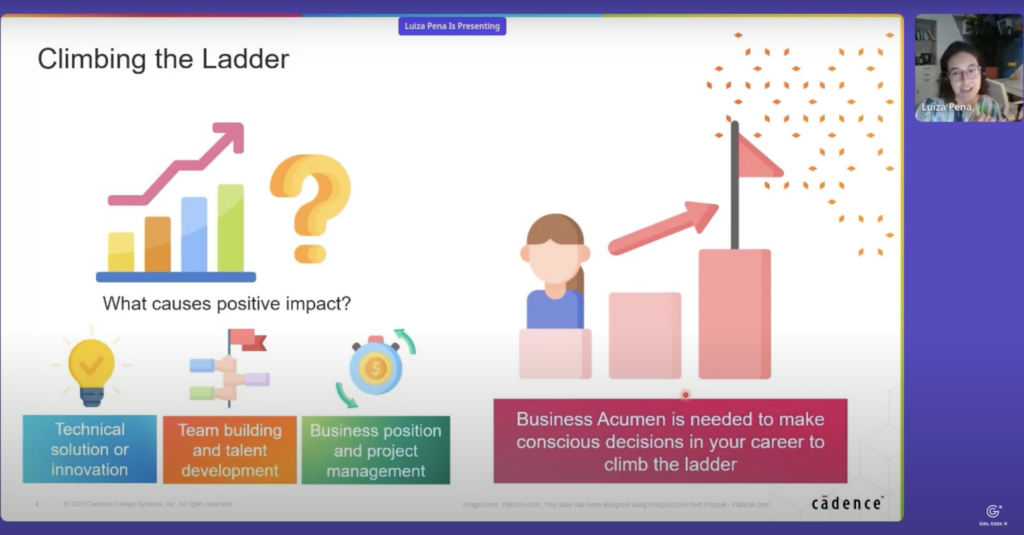
#14 – Joy Ebertz – “I write about running, but I also write a lot about diversity, equity, and inclusion. I write about career topics and tech technical topics.”
Joy Ebertz (Principal Software Engineer at Split) gives an overview of feature flags are, shares interesting use cases around using them to remove debt code load and stress testing, evaluating tech costs, parody testing, and logging. You can watch her talk “Feature Flag Use Cases You Haven’t Heard About Yet” on YouTube or read her full chat transcript.
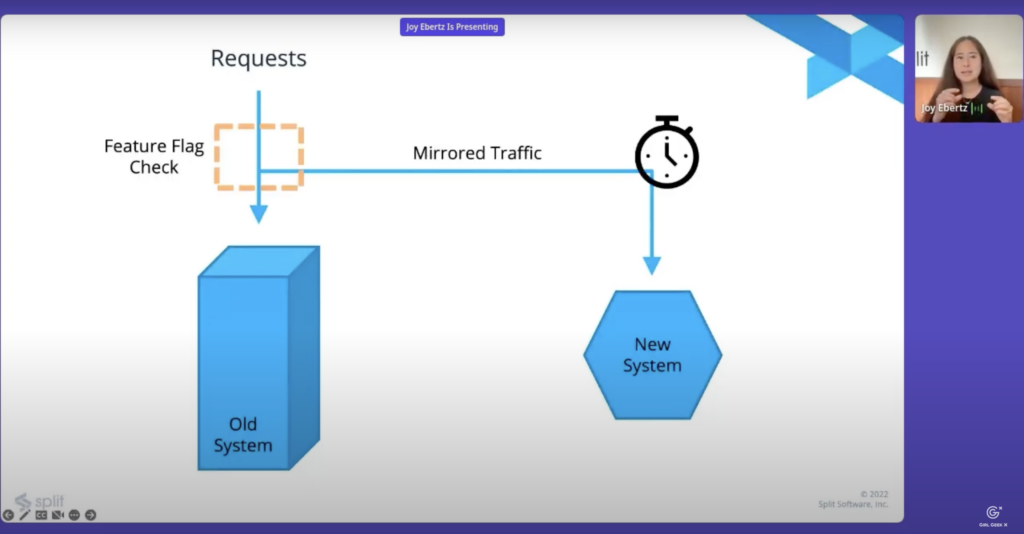
#15 – Moriel Schottlender – “Working in the open, working in open source, has benefits. Even if no one ever produces a PR to your code, you put it out there. That’s important, because we tend to only put out things that are perfect.”
Moriel Schottlender (Principal Systems Architect at Wikimedia Foundation) exposes interesting impacts of gendered language with neutrality.wtf, and shares technical insights for open source development and architecting software “in the open” for creating career opportunities. You can watch her talk “A Gendered-Language Flipping Tool That Exposes Bias: Neutrality.wtf Case Study” on YouTube or read her full chat transcript.
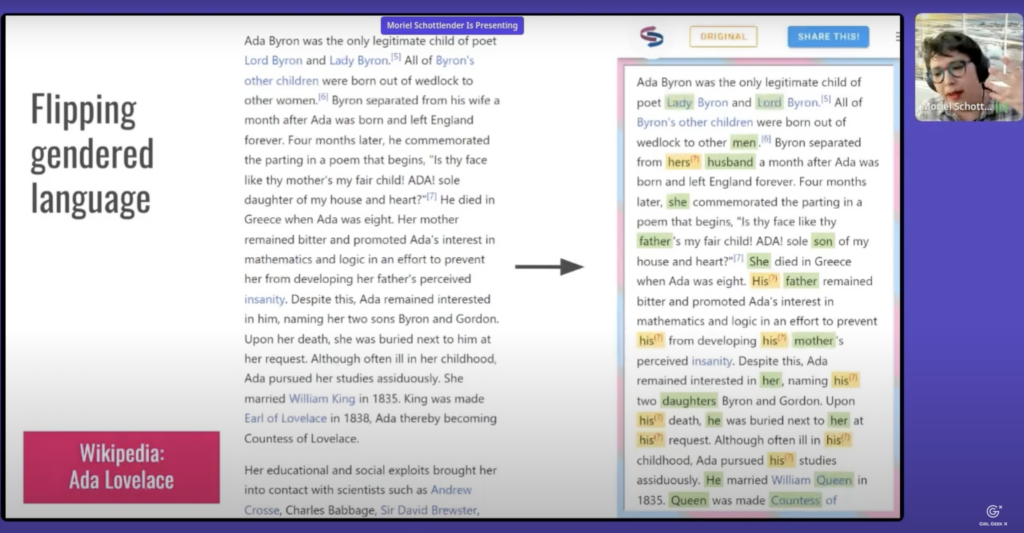
#16 – Shanea Leven – “When onboarding, start from the key flows and then expand to the architecture. You know, make sure that you start there and maybe draw them out.”
Shanea Leven (CEO and Founder at CodeSee) talks about why onboarding to your company’s code is hard, and shares tips, tricks, and tools to make this easier. She shares advice for the team, advice for the onboarding, and advice for continuous onboarding. You can watch her talk “Why Onboarding to a Company’s Legacy Codebase Sucks and How to Make it Work for Your Team” on YouTube or read her full chat transcript.
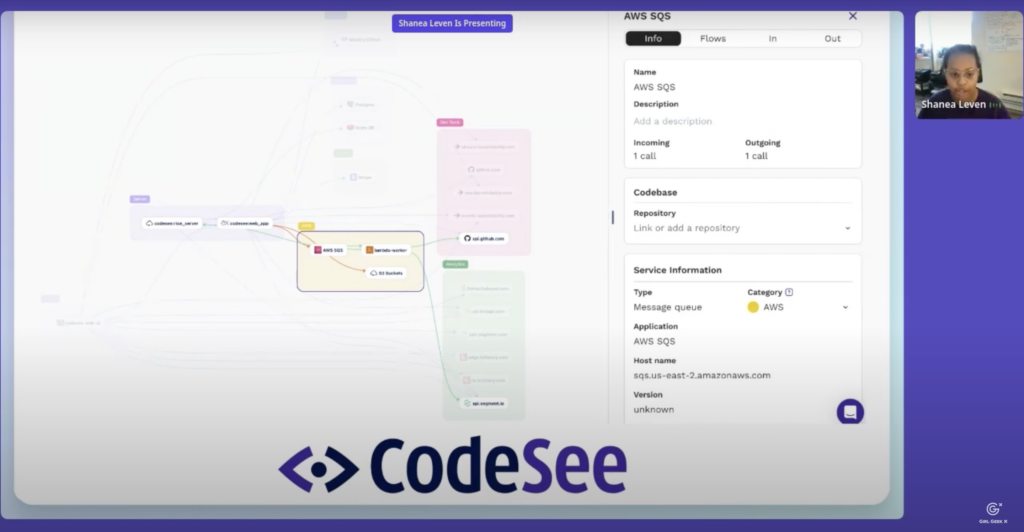
#18 – Katie Egeland – “Always connect back to the decision, or course of action, that this data storytelling will influence. Start with a summary of your key takeaways. Spoilers are good.”
Katie Egeland (Senior Insights Analyst at PlayStation) teaches you to communicate in a way that resonates with your audience to drive action and influence decisions. Go beyond “what” and “how” questions to “why” and “who” – really think about who it’s for and why they want to see it. You can watch her talk “Data Storytelling – How This ONE SKILL Will Set You Apart” on YouTube or read her full chat transcript.
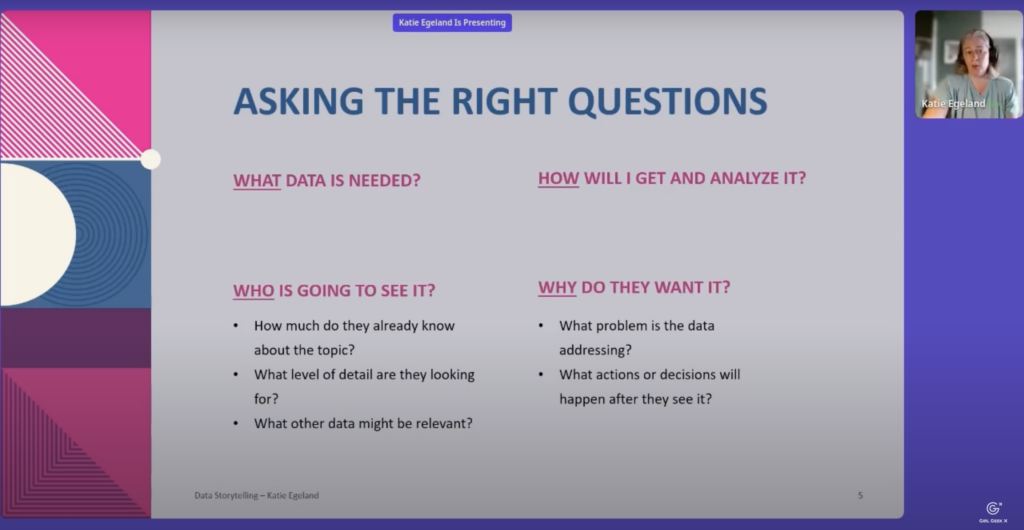
#19 – Aashima Lakhanpal – “Working in teams is only going to get tougher. Learn your team members’ key motivations. Then, pair them with your own strengths.”
Aashima Lakhanpal (Search Product Lead at Google) believes your team’s talent if leveraged correctly can drive significantly higher productivity and well-being. You can watch her talk “Strength Spotter for Teams” on YouTube or read her full chat transcript.

#20 – Odette Nemes – “Apprenticeships impact inclusion with a cohort model, so they’re not going in as an ‘only.’ Build your ecosystem. 91% of white people’s friends are white. We cannot keep using referrals.”
Odette Nemes (Head of Growth at Onramp) talks about how to develop new and existing talent in exciting and innovative ways with apprenticeships – and why now? If you’re recruiting at universities, you’re automatically eliminating 80% of black and brown folks – not a good tool for you. You can watch her talk “The Talent System Is Broken – Finding Better Ways to Hire” on YouTube or read her full chat transcript.
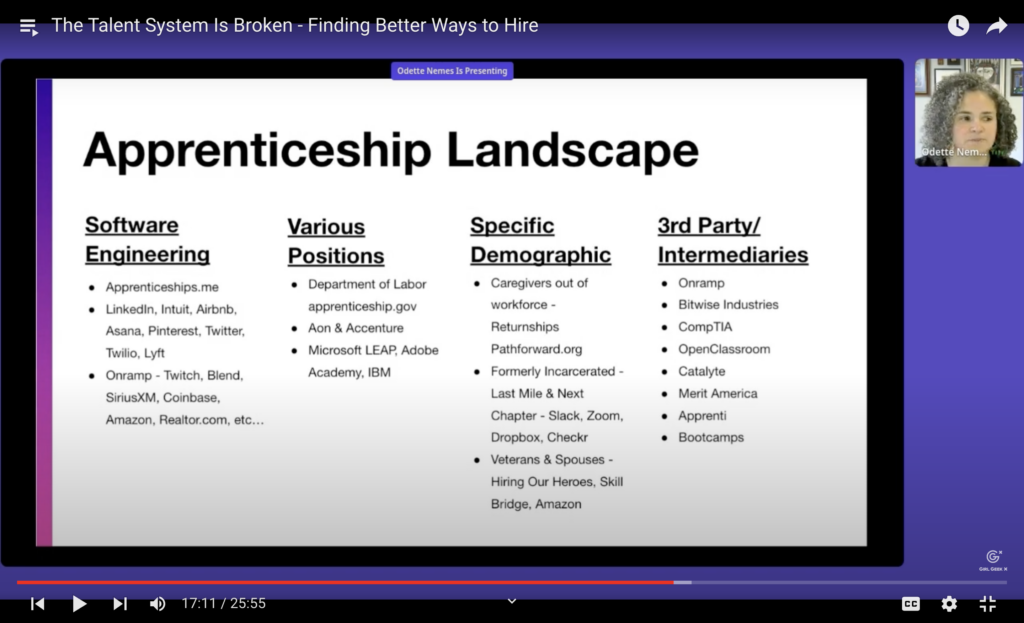
#21 – Spandana Govindgari – “Startups offer different things than corporates. For example, startups offer accelerated growth. It is important that you have diversified work experience of both in your career.”
Spandana Govindgari (Staff Engineering Lead at Meta) talks about how to transition from corporate to startups, what skills are required to be successful, the pros and cons of working at a startup vs corporate, and growing as an individual contributor (IC) without transitioning to management. You can watch her talk “Transitioning and Growing Your Career: Getting Comfortable with Getting Out of Your Comfort Zone” on YouTube or read her full chat transcript.
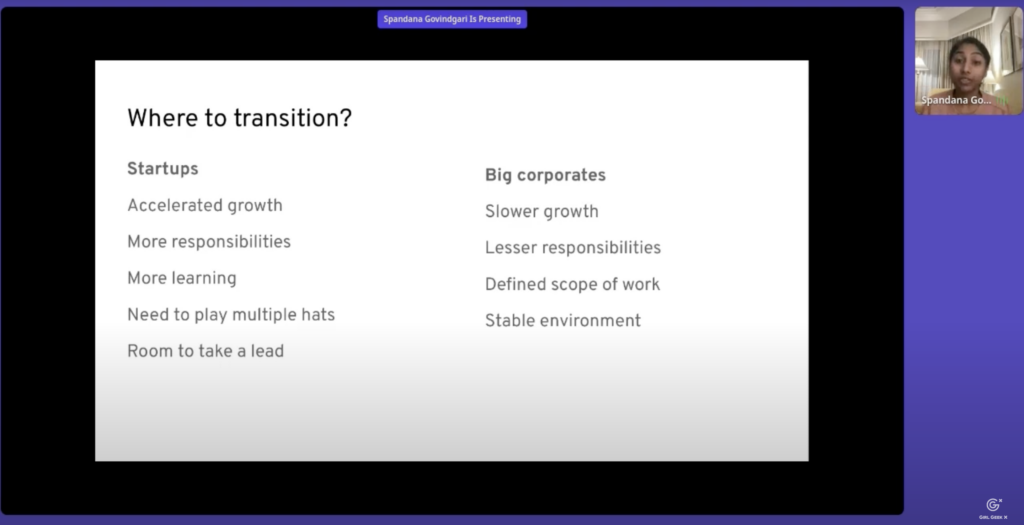
#22 – Judith Syau – “Networking is important for referrals. Get your foot in the door when an application doesn’t work. You never know how valuable a connection is, and potentially key to getting your next job.”
Judith Syau (Senior Software Engineer at Stripe) shares resources for researching a company’s culture from multiple angles, networking strategies, and questions to ask during the interview process to gain the necessary insights to choose the right company for you. You can watch her keynote “Understanding Company Culture Before Accepting the Job Offer” on YouTube or read her full chat transcript.
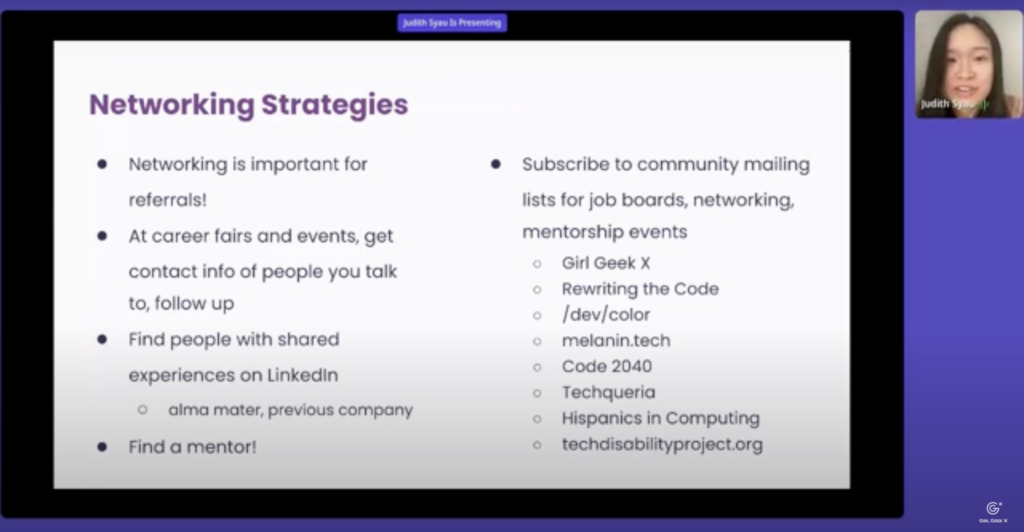
#23 – Ginger Holt – “To increase your visibility, present and share your work as much as possible. Get face time with execs. Sign up for office hours. Ask questions in meetings.”
Ginger Holt (Senior Staff Data Scientist at Databricks) distills career advice gleaned over a decade of working in academia and corporate / startups. Clarity, consensus and inclusion is key. You can watch her talk “How To Take Control of Your Career” on YouTube or read her full chat transcript.
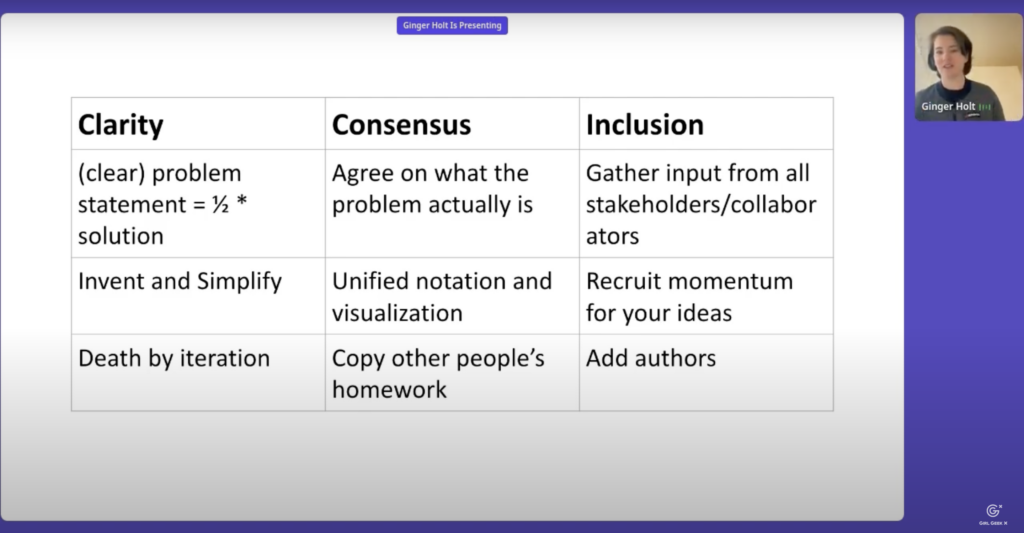
#24 – Erica Pisani – “Keep a long-running brag sheet across various roles. Listing dates that the project(s) ran for demonstrates velocity of work as a valuable lever for promotion.”
Erica Pisani (Senior Software Engineer at Netlify) talks about why and how you can keep a “brag sheet” to maximize your chances for career success. She shares her brag sheet template and demos your first brag sheet! You can watch her talk “Increasing Your Odds of Career Success with a Career ‘Brag Sheet” on YouTube or read her full chat transcript.
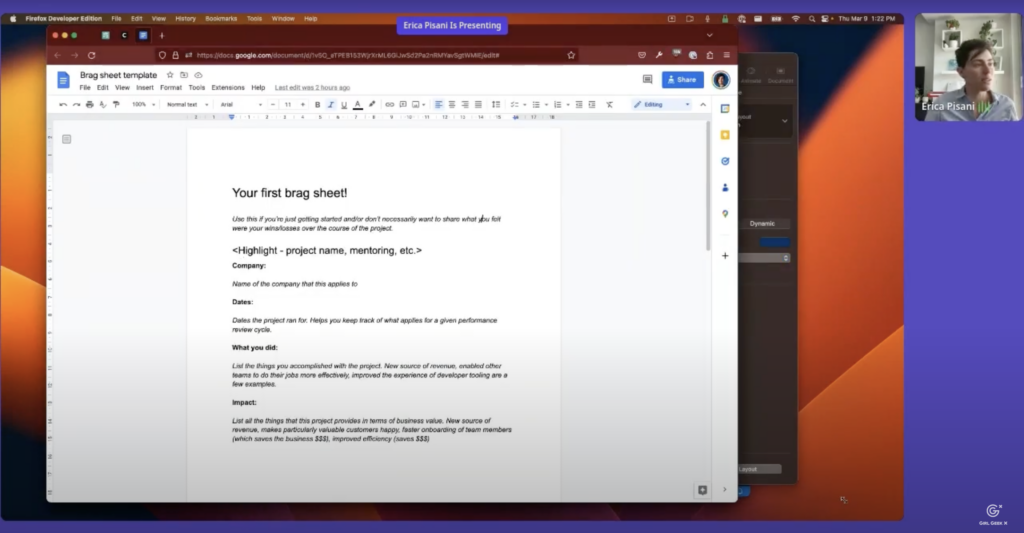
#25 – Aliza Carpio – “Your base salary and your bonus tend to be the least flexible. Your RSUs and PSUs are where you have the greatest flexibility for negotiation. On balance, a modified schedule is negotiable.”
Aliza Carpio (Director, Product and Tech Evangelist at Autodesk) shares tips for you to consider beyond the base salary, from future facing RSUs and PSUs, to extra incentives like a sign-on bonus or negotiating your job description or title. You can watch her talk “Beyond the Base: Negotiating Your Total Package” on YouTube or read her full chat transcript.

#26 – Melsha Nicole Key – “Make sure that your definition of excellence aligns with your manager’s definition of excellence. Don’t just do the work that you that you have to do. Align with the department goals.”
Melsha Nicole Key (Senior Marketing Manager at GAP) talks about the importance of PIE (Performance, Image and Exposure), the importance of PIE at different stages in your career, how to get promoted while working remotely, and shares tips for gaining exposure in a large company. You can watch her talk “The Key to Excelling In Your Career is to Manage Your PIE (Performance, Image and Exposure)” on YouTube or read her full chat transcript.
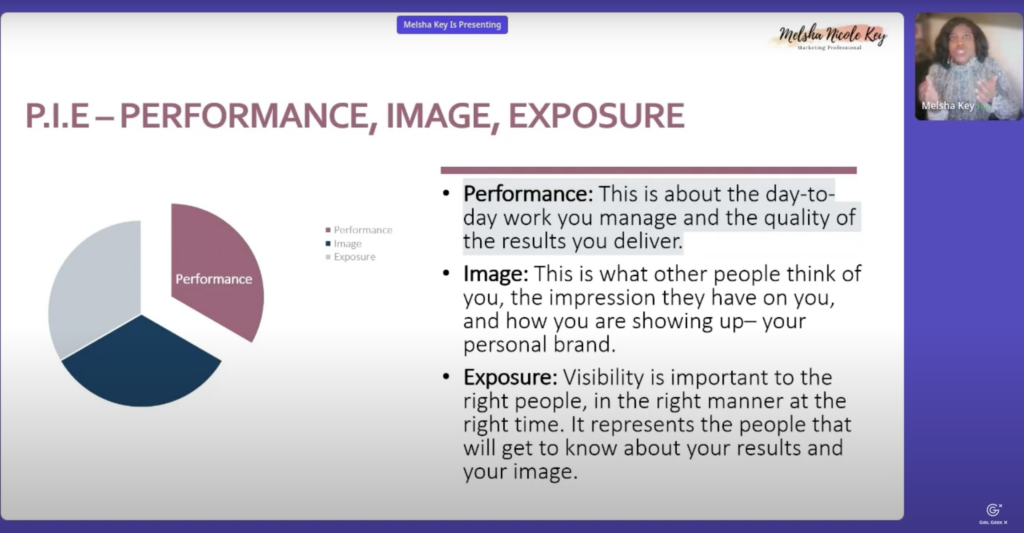
#27 – Cynthia C. Harbor – “Intentionality beats imposter syndrome any day. You will encounter roadblocks and gatekeepers every step of the way. Navigate them by becoming a subject matter expert.”
Cynthia C. Harbor (Senior Technical Program Manager at CACI-Federal) discusses “troot mout” and calls a thing a thing. Gatekeeping is not always bad. In the height of the civil rights era, grass-root organizations and the church served as gatekeepers (from politicians and developers and others encroaching on the African American community). Become a subject matter expert. You can watch her talk “How To Navigate The Gatekeeping Culture in Tech“ on YouTube or read her full chat transcript.
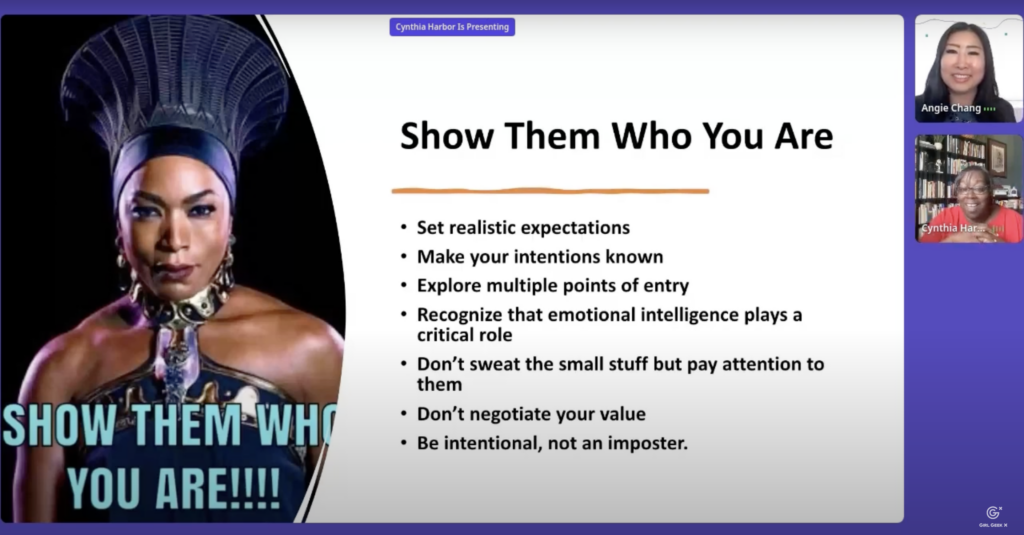
#28 – Kelly Kitagawa – “The limiting belief about interviews is that people are born good interviewers. In fact, the people who are best in interviews are the ones that are the most prepared.”
Kelly Kitagawa (Senior Solutions Engineer at HashiCorp) shares her experiences learning on the job, and talks about overcoming limiting beliefs around like mindsets and imposter syndrome. She recommends creating an education plan, reframing your story, and applying for the job. You can watch her talk “Are You Technical Enough?” on YouTube or read her full chat transcript.
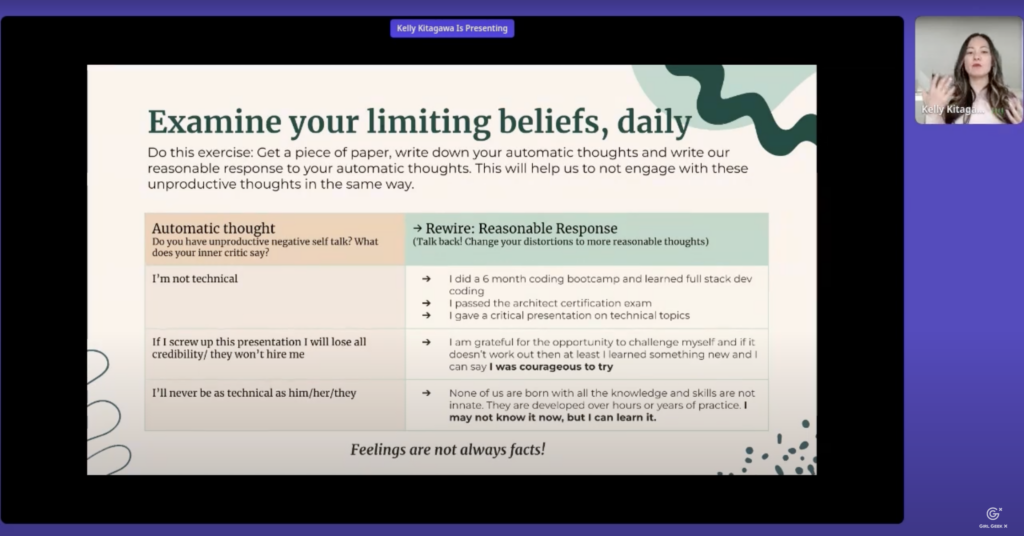
#29 – Arathi Mani – “In the spirit of International Women’s Day, let’s pick a very cool tissue – the uterus! See here all of the different cell types in the uterus. The uterus is also an incredibly cool muscle – what enables it to expand from the size of a lemon, to the size of a watermelon.”
Arathi Mani (Engineering Manager at Chan Zuckerberg Initiative) discusses the process of building successful multidisciplinary teams that bring together the best of all disciplines. She demos CZI’s gene expression tool to visualize uterus cell types in the spirit of International Women’s Day. You can watch her talk “How to Build Teams that Bring Together the Best of All Specialities“ on YouTube or read her full chat transcript.

#30 – Elena Ringseis – “Leverage discussion prompts in different ways. Try to meet live or in-person wherever you can. Twice-weekly Slack posts on key happening in the org, company announcements, and activities.”
Elena Ringseis (DesignOps Leader) makes the case for stronger relationships across your remote team – it’s within reach! She shares stories about how a little listening goes a long way, and successful community building. You can watch her keynote “Creating a Strong Team Culture in a Hybrid Workplace“ on YouTube or read her full chat transcript.
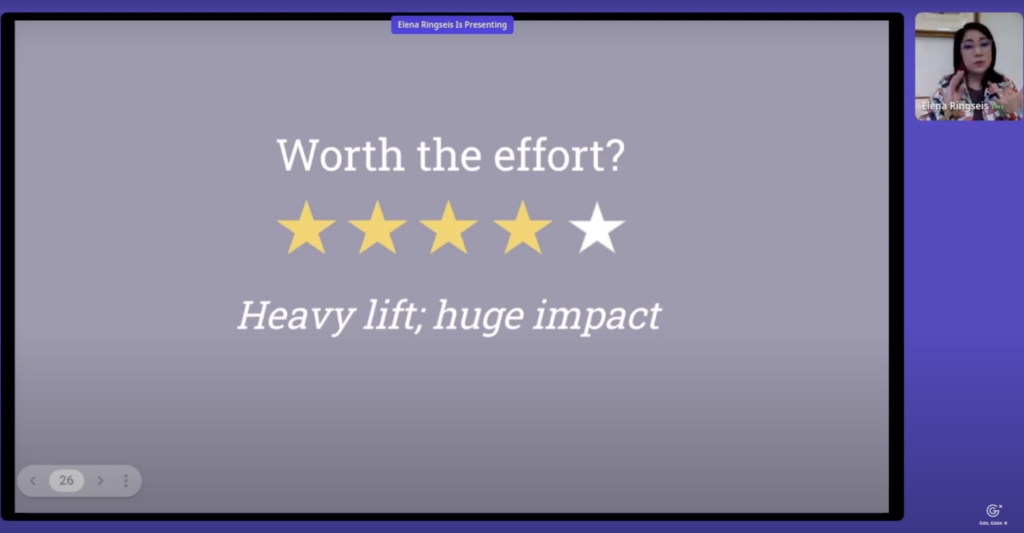
#31 – Tasha Penwell – “You get certificates of completion after you complete a course – something that you can share on LinkedIn. AWS is one of the most in-demand skills in technology today.”
Tasha Penwell (Founder at Bytes and Bits) is an AWS Educator for AWS Academy and AWS re/Start, using different curriculum and strategies to teach AWS skills. She identified two training and lab resources available, and the the role of guided notes when teaching. You can watch her talk “Scaling Women in Tech as an AWS Educator” on YouTube or read her full chat transcript.

#32 – Sheri Byrne-Haber – “You don’t have to get a college degree in accessibility. In fact, such a thing does not exist. Go learn about all this stuff yourself, invest time, go to meetups, talk to people who are already in the field.”
Sheri Byrne-Haber (Senior Staff, Accessibility Architect at VMware) talks about what accessibility is, how it fits in the overall software development life cycle, and how to prepare for a successful career in accessibility. You can watch her talk “Consider a Career in Accessibility“ on YouTube or read her full chat transcript.
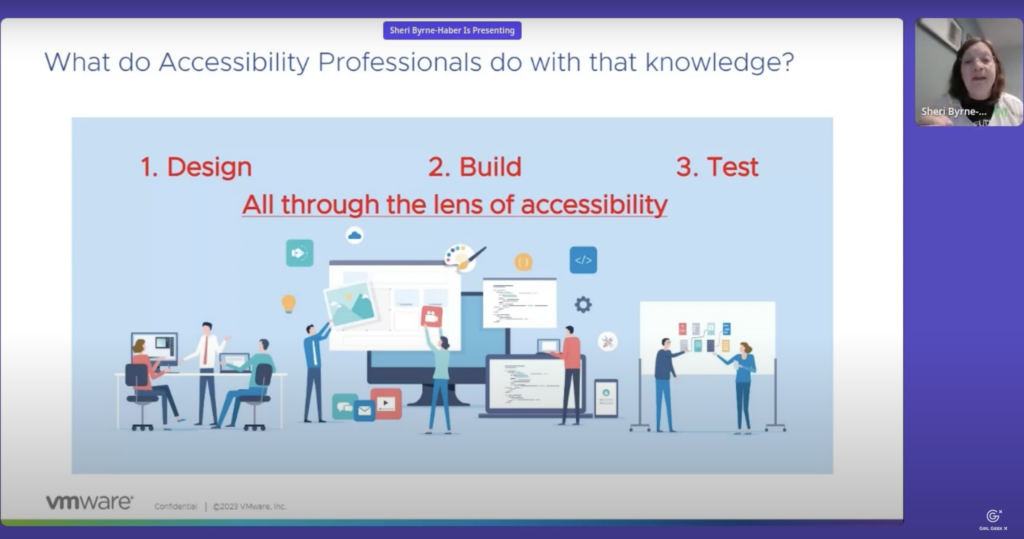
#33 – Korene Stuart – “Highlight your strengths in 1-2 sentences – your experiences and skills. Include key words to generate hits on the tracking software, making sure your keywords are coming straight from the job description.”
Korene Stuart (Director of Programming at G{Code}) gives you the tools and resources to create a technical resume that highlights everything you have to offer! Her pro-tip: find the three job roles that you want to do the most, and only apply to those positions, instead of being all over the place and applying to 30 different job roles. She walks job-seekers thru building a technical resume for both the applicant tracking system (ATS) and recruiter. You can watch her workshop “Building a Technical Resume: Workshop“ on YouTube or read her full chat transcript.
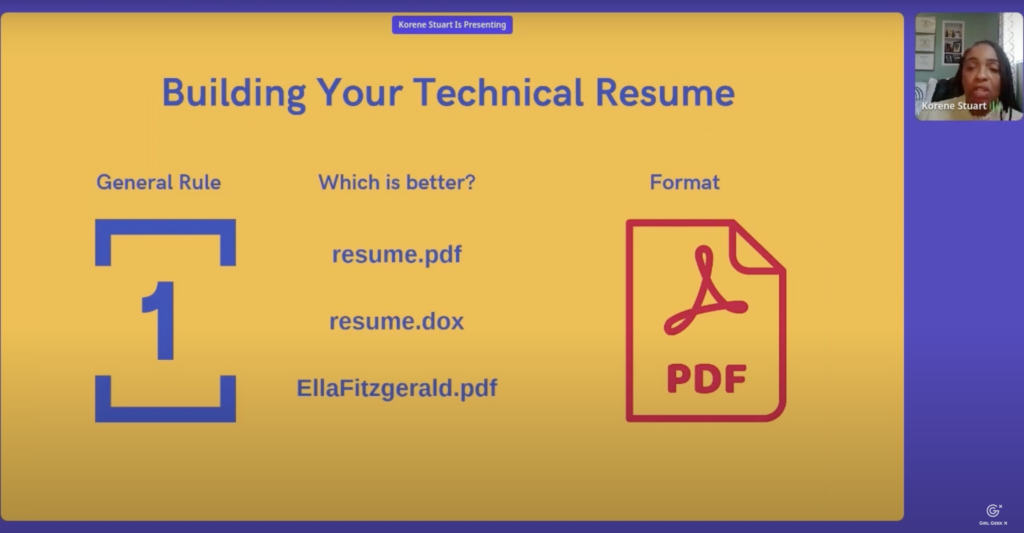
#34 – Jenée C. Smith – “Make your GitHub profile shine and showcase your personality. Think about who you are. How do you want to be remembered?”
Jenée C. Smith (Software Engineer at Microsoft) reviews best practices for customizing your GitHub profile so you can stand out to recruiters and other developers. She stresses clarity in the README and walks through examples. You can watch her talk “Developing Your Professional Brand with GitHub“ on YouTube or read her full chat transcript.

#35 – Xinran Waibel – “I like writing about data engineering. I created a publication called ‘Data Engineer Things’ to share my learnings of what I learn at work.”
Xinran Waibel (Senior Data Engineer at Netflix) talks about modern data engineering, how data quality is defined and measured, and why it’s important for data engineering to closely connect with business. She discusses challenges and practical tips on designing data systems that consistently produce high-quality data. You can watch her talk “Engineering Data for Data Quality“ on YouTube or read her full chat transcript.

#36 – Carly Richmond – “Solve hard problems in a more quantitative way. Here’s how we can use tools such as Google Lighthouse, Synthetic Monitoring, and Elastic Real User Monitoring to achieve that.”
Carly Richmond (Developer Advocate at Elastic) discusses the reasons why feedback on feature adoption can be difficult to validate. She teaches you to measure feature effectiveness quantitatively to support qualitative user feedback. You can watch her talk “Are They Really Using It? Monitoring Digital Experience to Determine Feature Effectiveness” on YouTube or read her full chat transcript.

#37 – Shalini Sundaram – “One of my early moves, I jumped into a cybersecurity startup to wear multiple hats. One day, I sat next to the security researcher. The next day, I spent time with the business development team learning use cases and integrations.”
Shalini Sundaram (Group Product Manager at Proofpoint) encourages you to make a career transition into the cybersecurity. She talks about the Solar Winds hack, which affected 18,000 organizations that downloaded the software. Then, she shares her career journey as perspective on the cybersecurity industry. You can watch her talk “Demystifying Cybersecurity, A Good Career Choice” on YouTube or read her full chat transcript.
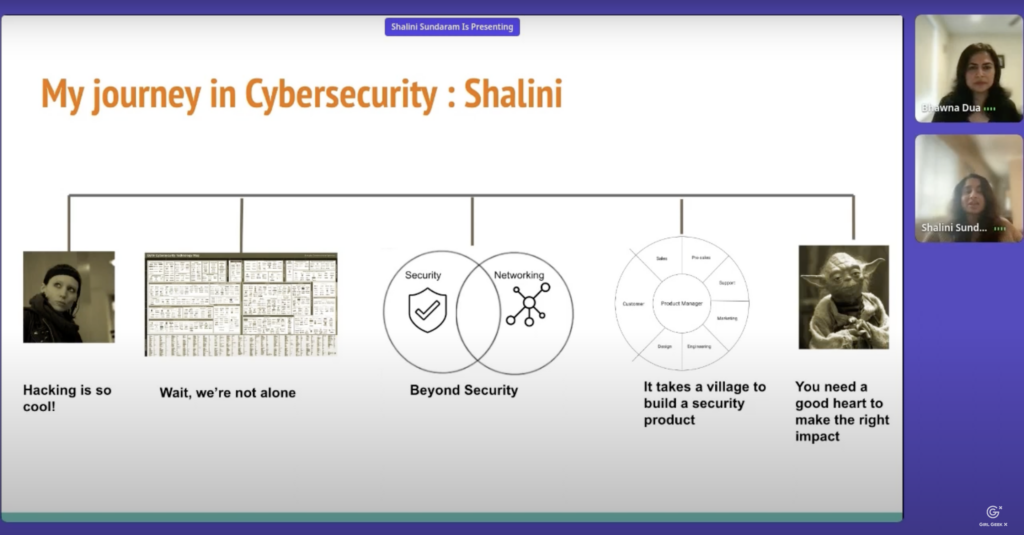
#38 – Bhawna Dua – “Imagine hackers using your IOT devices to get into your home network and access all your information through Ring doorbells, Ring camera, and digitized fridges. This motivated me to work in cybersecurity.”
Bhawna Dua (Engineering Program Manager at Proofpoint) encourages you to make a career transition into the cybersecurity. She talks about the Saudi Aramco hack, and shares resources for learning about cybersecurity, from online courses to bootcamps and podcasts. You can watch her talk “Demystifying Cybersecurity, A Good Career Choice” on YouTube or read her full chat transcript.
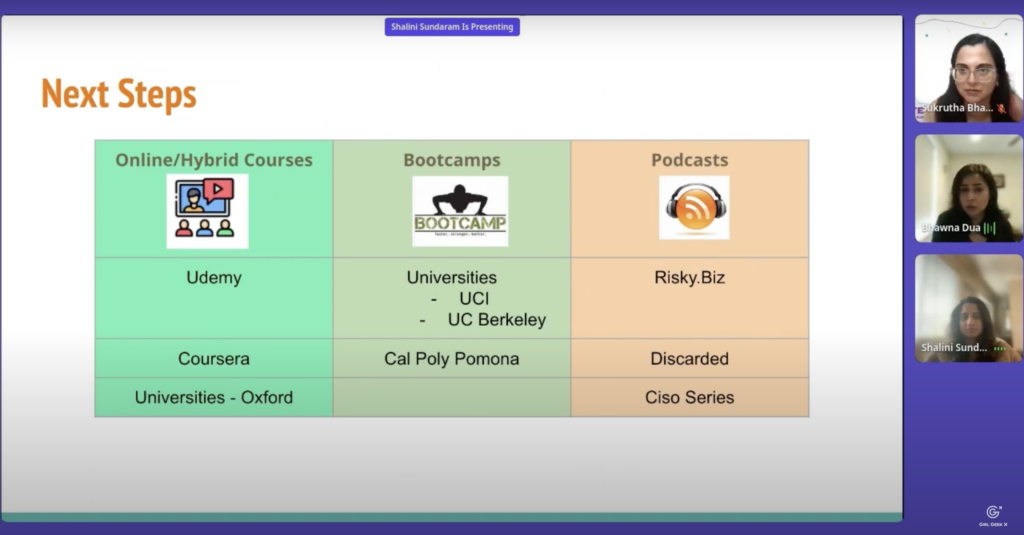
#39 – Shanea Leven – “Open source contributions are an easy check mark to show off your experience to recruiters. Then, optimize by visually walking people through those code changes. You won’t be alone in doing this by joining OpenSourceHub.io”
Shanea Leven (CEO and founder at CodeSee) shares tips on optimizing your resume for ATS algorithms and reverse engineering your resume. Then, she talks about how to create a visual map of your codebase that will help you plan, automate and review your next feature, refactor or code review. You can watch her developer workshop “Demystifying Cybersecurity, A Good Career Choice” on YouTube or read her full chat transcript.

#40 – Allison Liemhetcharat – “Ultimately, how do you want to tell your story? How do you want to plot the line, with all the data points all over the place? If you’re interested, I can tell you all the twists and turns in the straight line.”
Allison Liemhetcharat (Senior Staff Software Engineer at DoorDash) discusses how taking a sabbatical helped tremendously with burnout. She describes the three games she developed during her sabbatical, and how game development can be a lot of fun, and/or it can be a lot of work. You can watch her talk “How I Created 3 Games (of Different Genres) and Was Covered by Engadget During My Sabbatical” on YouTube or read her full chat transcript.
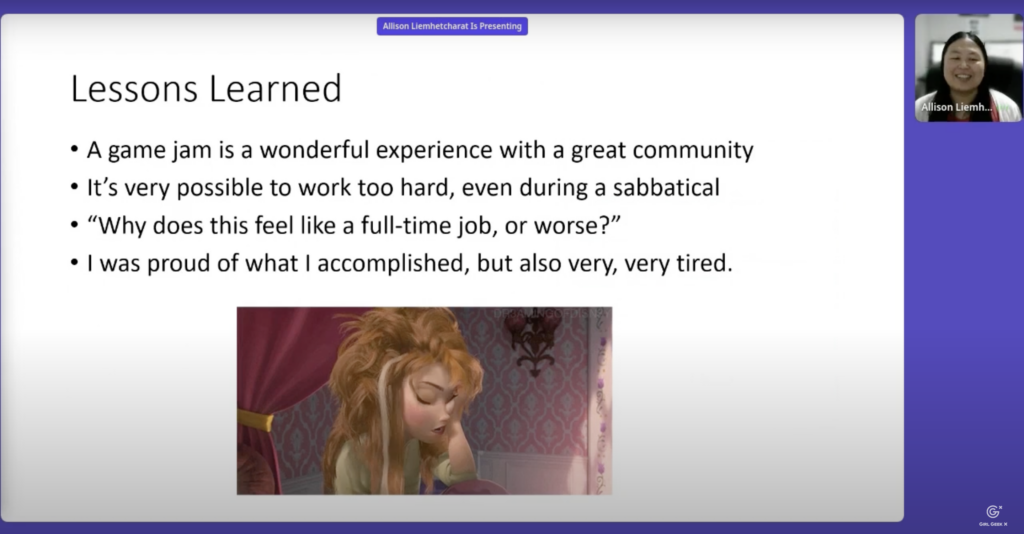
#41 – Mudita Tiwari – “Typically, a developer is working on a business problem. Your developer is trying to understand ‘what is it that the business wants from me?’ That’s what you’re trying to solve for.”
Mudita Tiwari (Senior Director of Product, Developer Experiences at PayPal) discusses how to build products for developers and technical users, shares collaboration best-practices with UX research and design for holistic product development. She talks about building low-code solutions to scale product adoption. You can watch her talk “Developer-Centric Design Approach To Building Technical Solutions” on YouTube or read her full chat transcript.
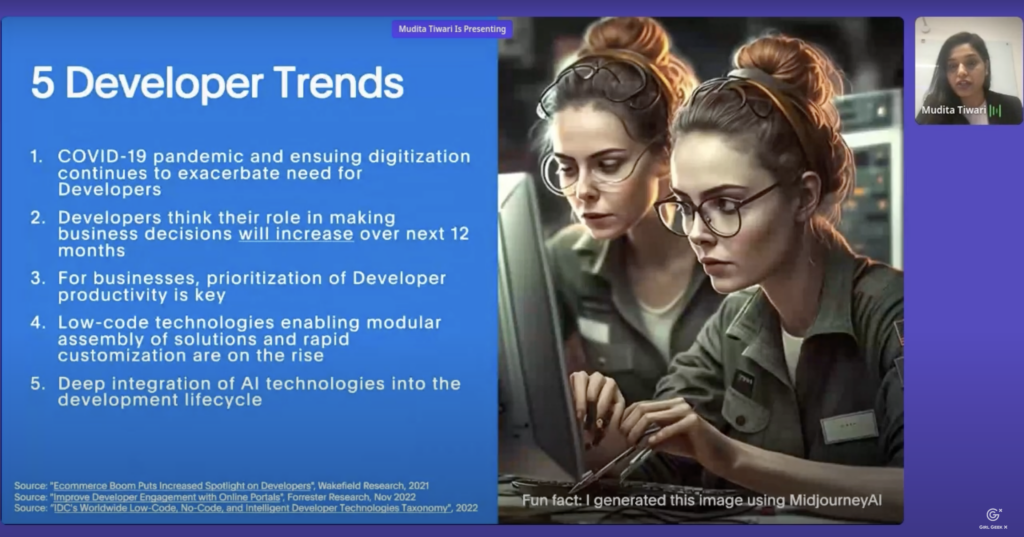
#42 – Marilyn Hollinger – “Use tools like Figma, Sketch, and InVision for people to get into the design, see them, and comment on them. There needs to be ongoing commentary about your designs, preferably in the designs themselves.”
Marilyn Hollinger (Senior Director, User Experience at Betterworks) covers optimizing interactions with your UX team and Product Management and Engineering, shares key elements of managing a successful UX team, and discusses the steps in the growth and maturity of a UX team. You can watch her talk “Building and Managing a UX Practice” on YouTube or read her full chat transcript.
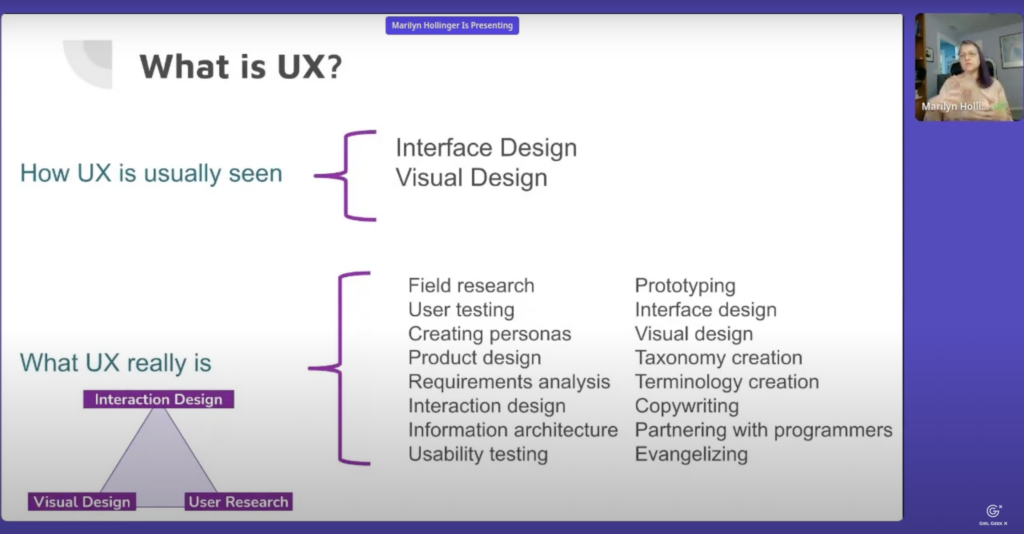
#43 – Rashmy Parimi – “I joined a startup working on a soft tissue surgical platform. Verb Surgical has been acquired by Johnson and Johnson, and that team is continuing the work on that platform. Hopefully soon that will be in the market helping people improve their quality of life.”
Rashmy Parimi (Manufacturing Test Engineering Manager at Johnson and Johnson) discusses the growing role of robotic medical devices to improve quality of life, shares career paths in robotic medical devices, and provides a forward-looking outlook on the industry, sharing this guide to robotic surgery companies. You can watch her talk “Dr. Robot Will See You Now” on YouTube or read her full chat transcript.
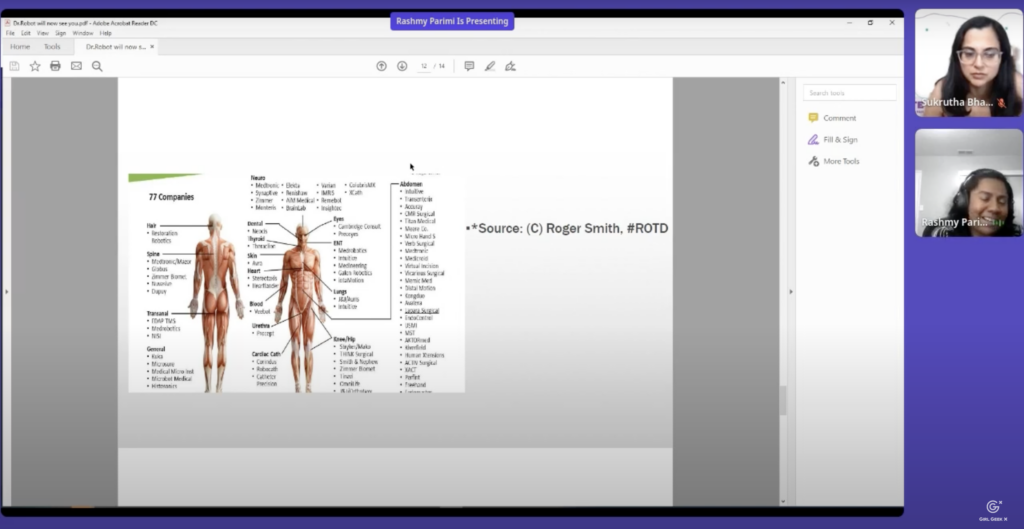
#44 – Sukrutha Bhadouria – “With hosting Girl Geek X events, we’ve dramatically seen a shift in people wanting to get more, do more, and move the goalpost for ourselves. We also need to take care of ourselves. Throughout these sessions, you’ll see us balancing that conversation. How do you seek out more while also putting yourself first?”
Sukrutha Bhadouria (CTO at Girl Geek X and Senior Director of Engineering at Salesforce) discusses why women continue to flock to Girl Geek X events after 15 years to grow their careers in the fast-moving technology industry. You can watch her host “ELEVATE 2023 Conference and Career Fair” on YouTube or read her full chat transcript.
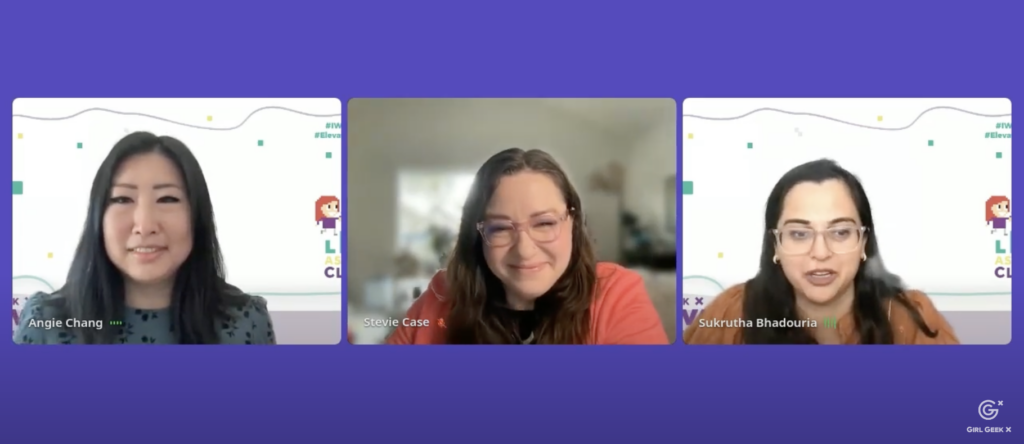
#45 – Angie Chang – “We’re really excited to have Autodesk, Cadence, United States Digital Service, Dematic and CodeSee with us, as sponsors and government participants. You’ll be hearing from their women leaders and founders today and tomorrow. Also, check out GIRLGEEK.IO/JOBS!”
Angie Chang (CEO at Girl Geek X) thanks our supporters at Autodesk, Cadence, United States Digital Service, Dematic and CodeSee for providing speakers, support, jobs, and more. Check out these companies’ featured jobs at GIRLGEEK.IO/JOBS – they are actively hiring! You can watch her host “ELEVATE 2023 Conference and Career Fair” on YouTube or read her full chat transcript.
Quotes from female speakers at our 6th annual Elevate conference have been edited for clarity.
